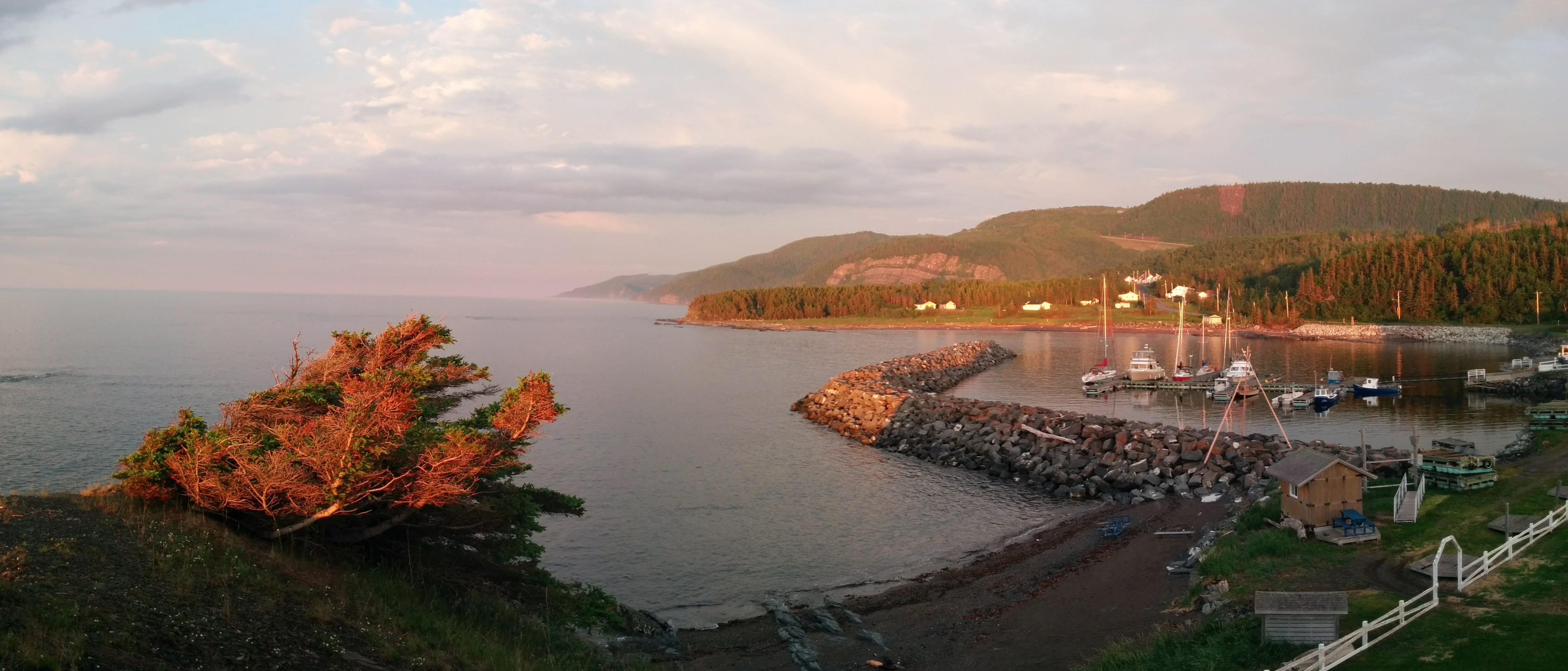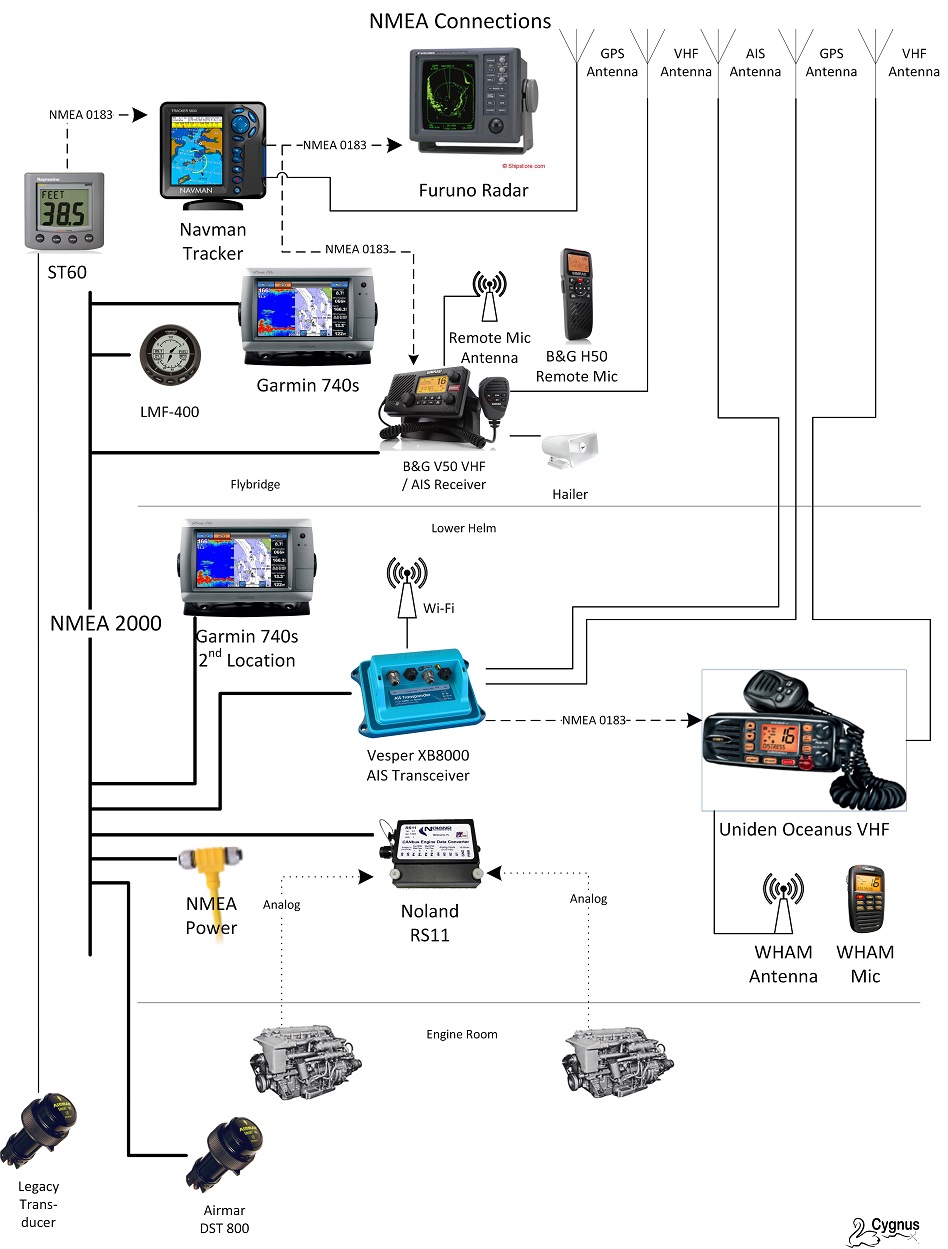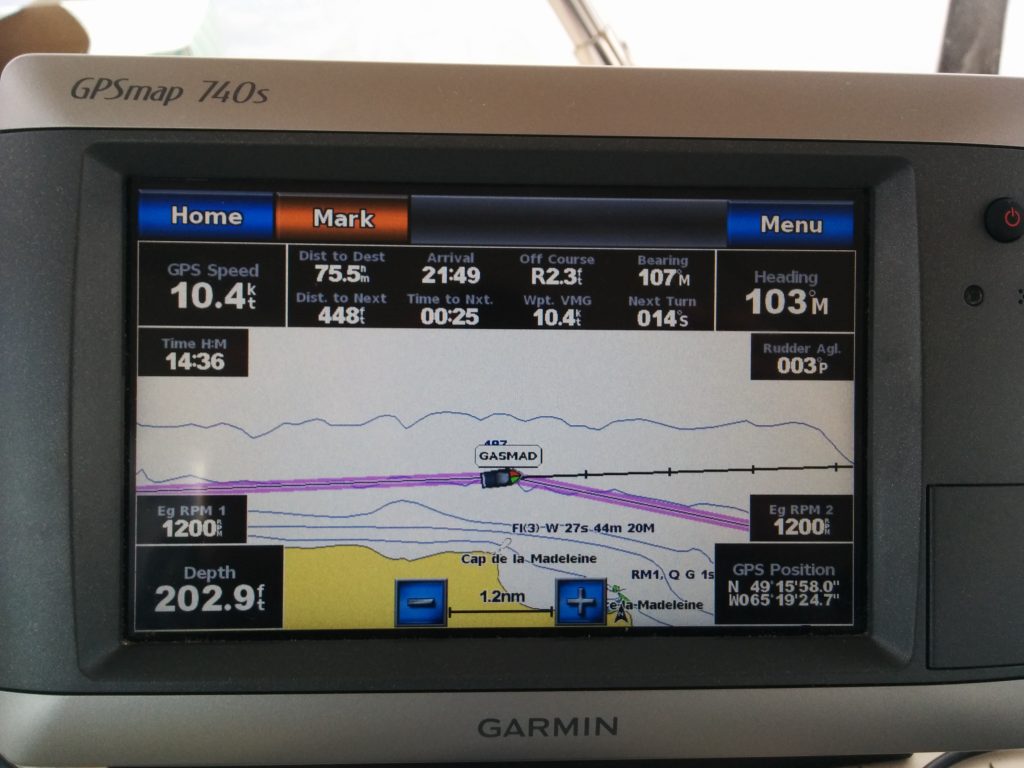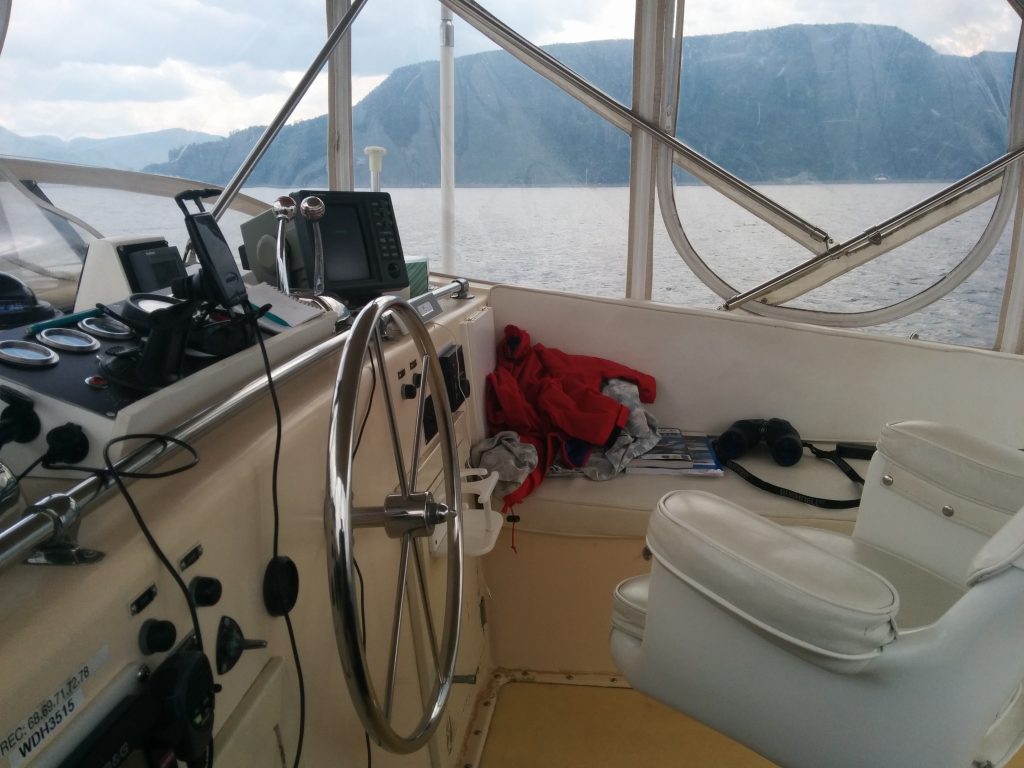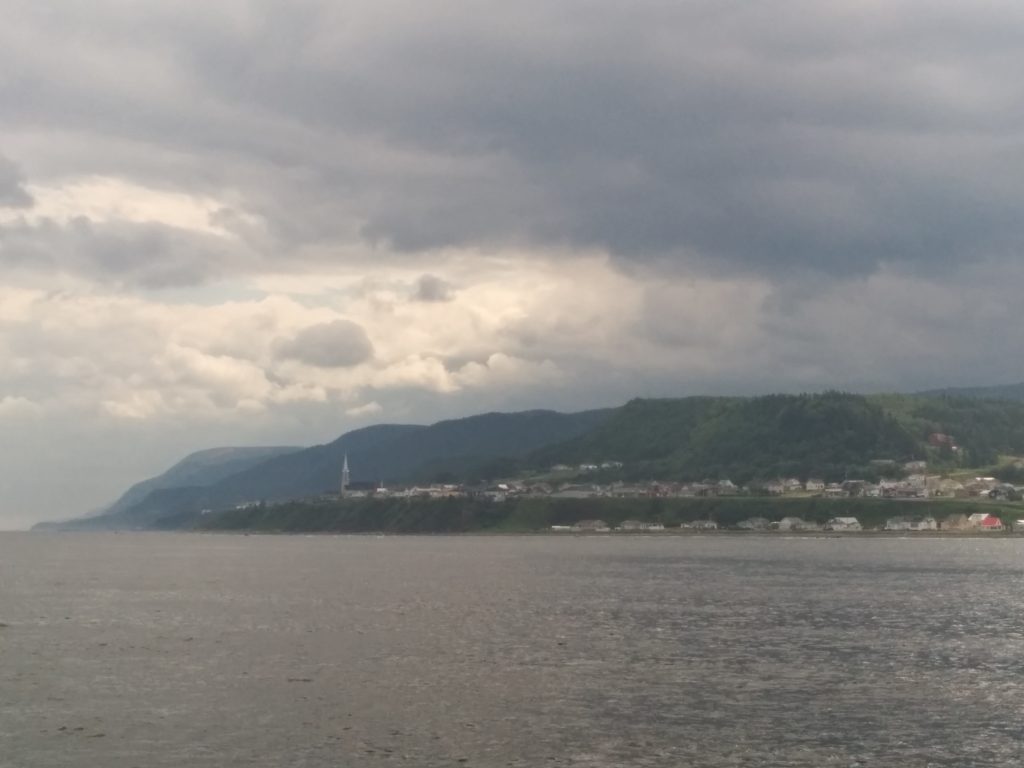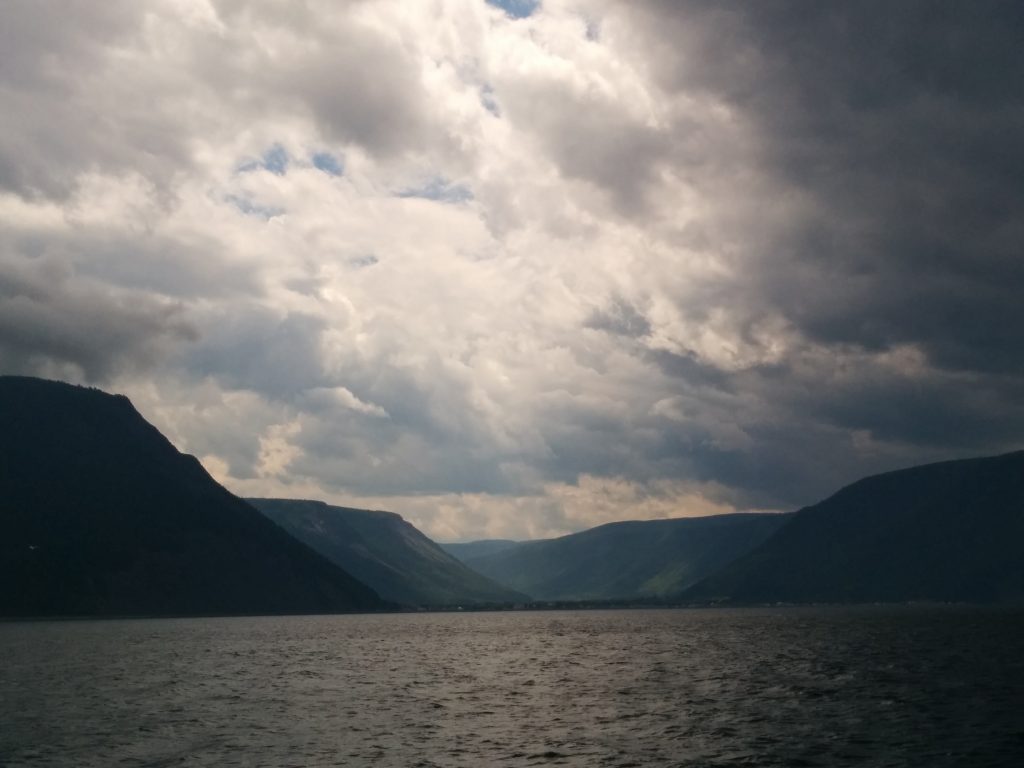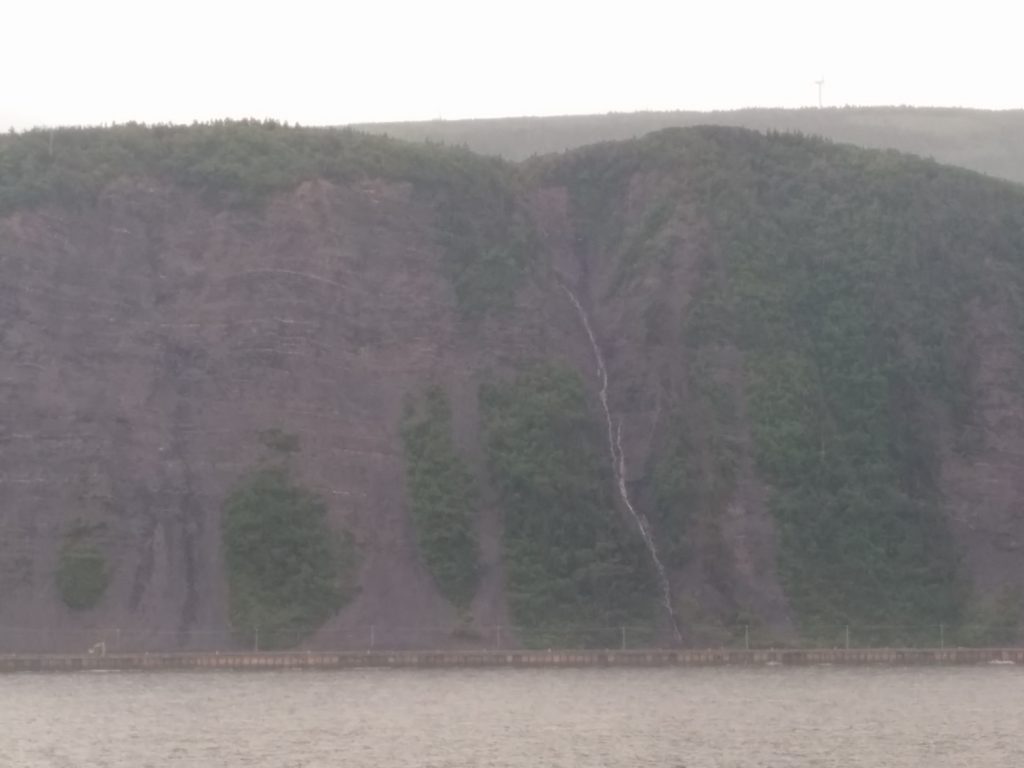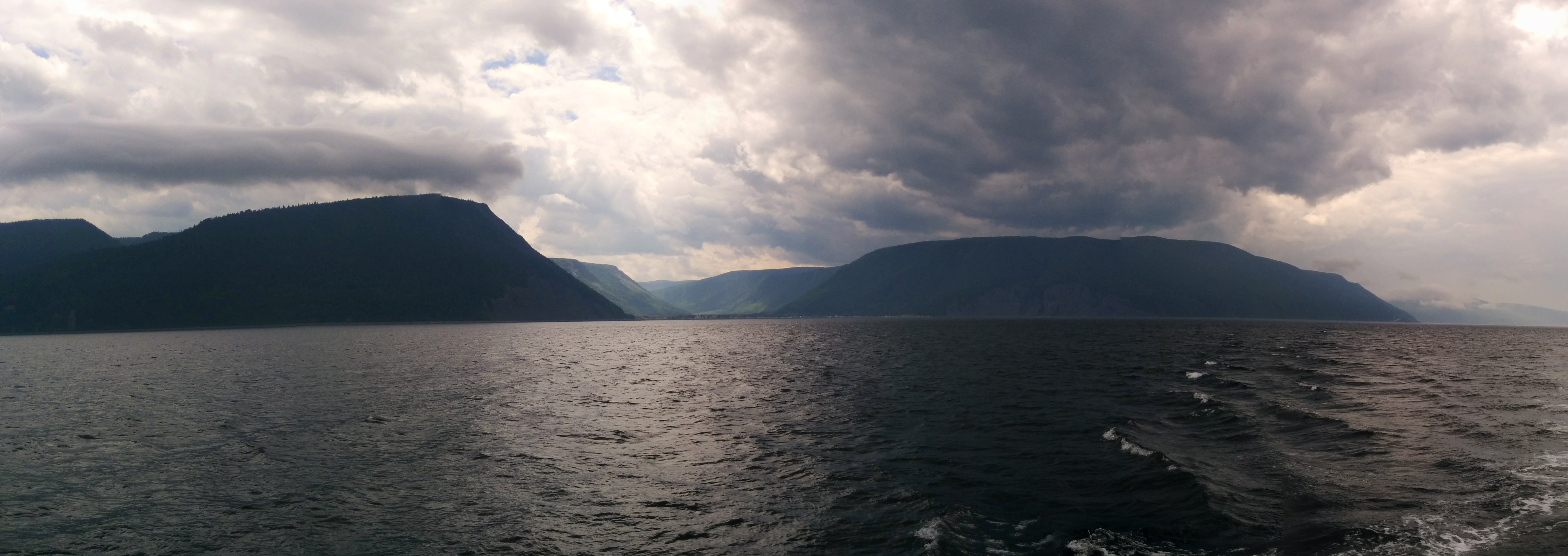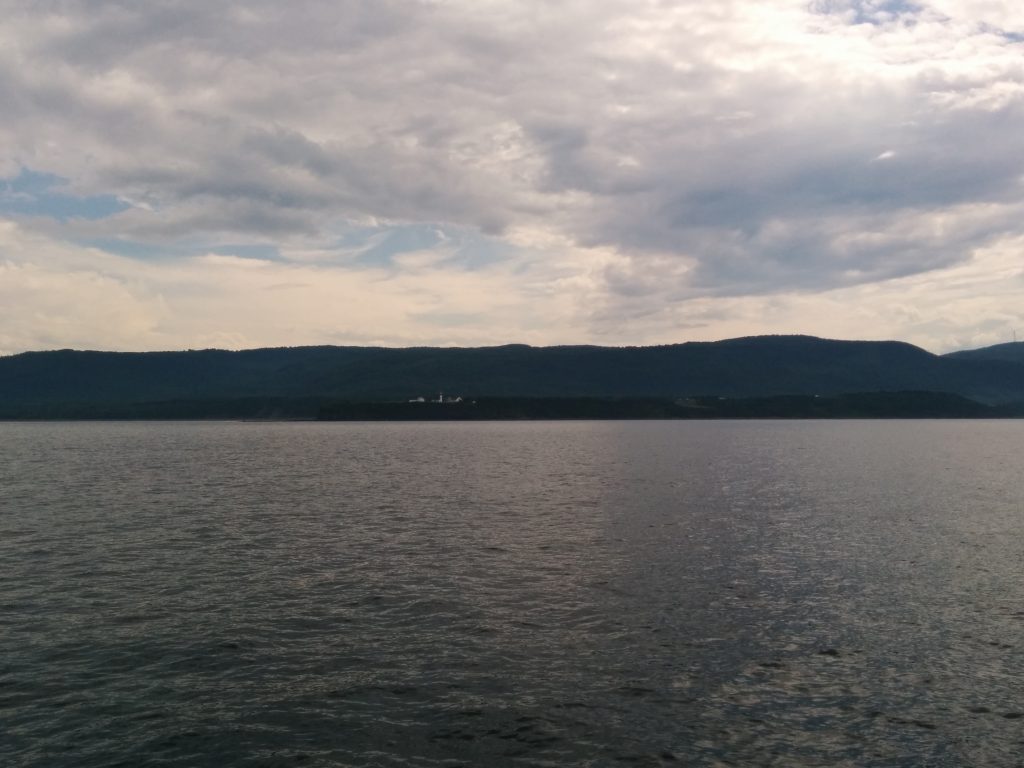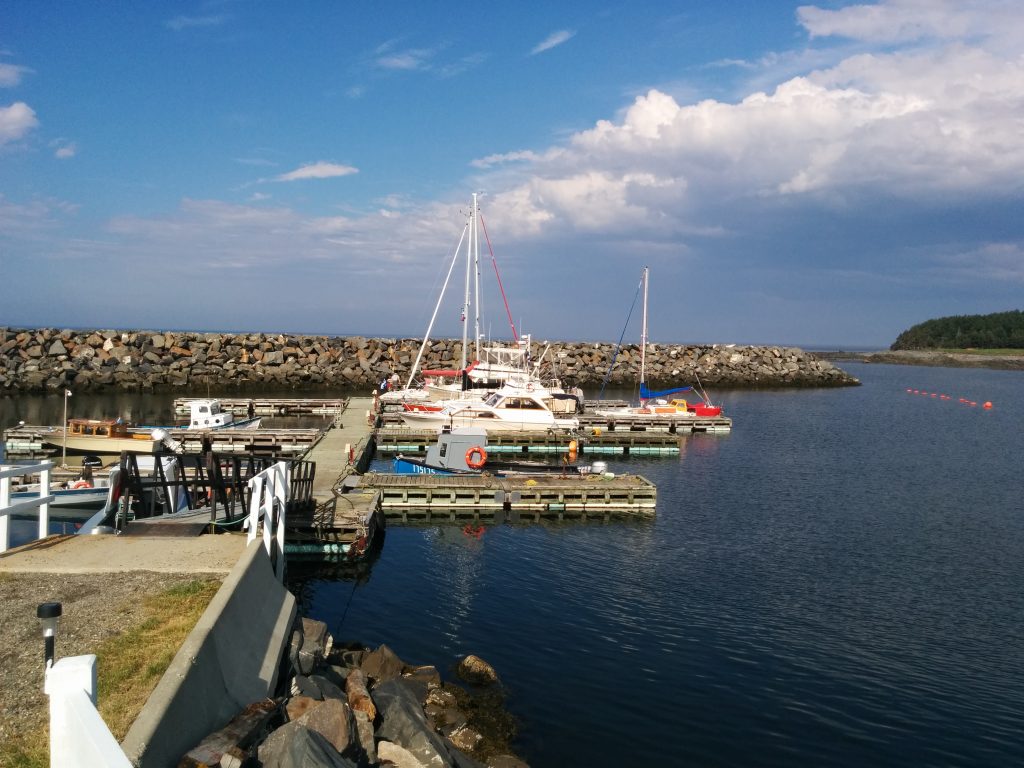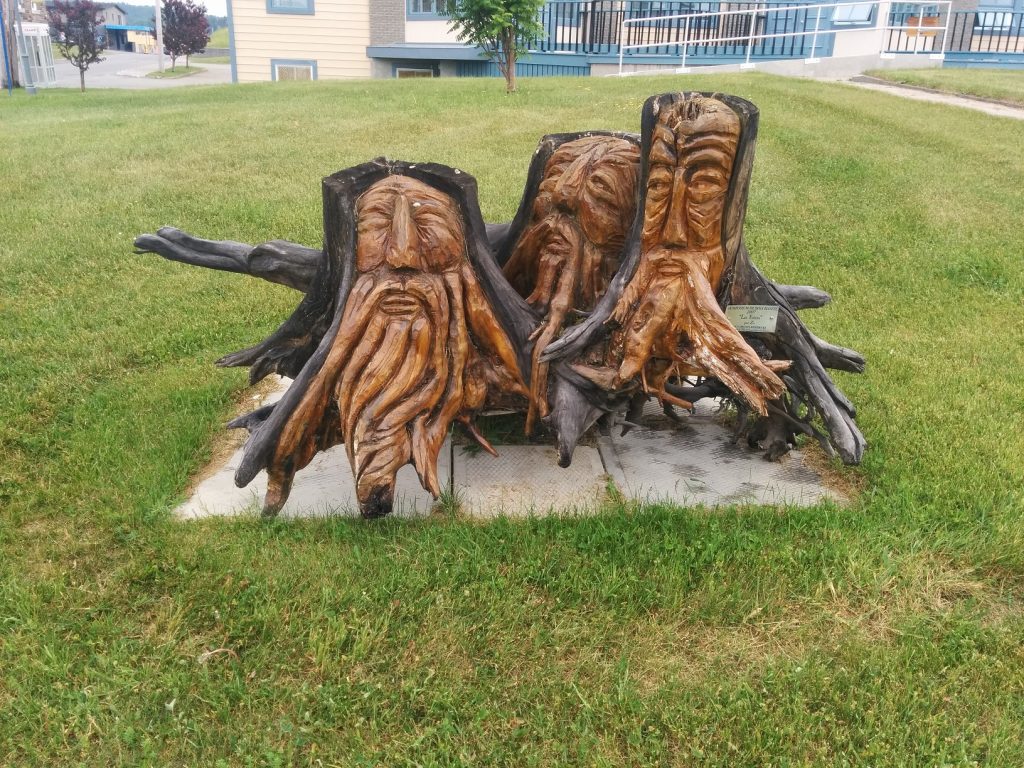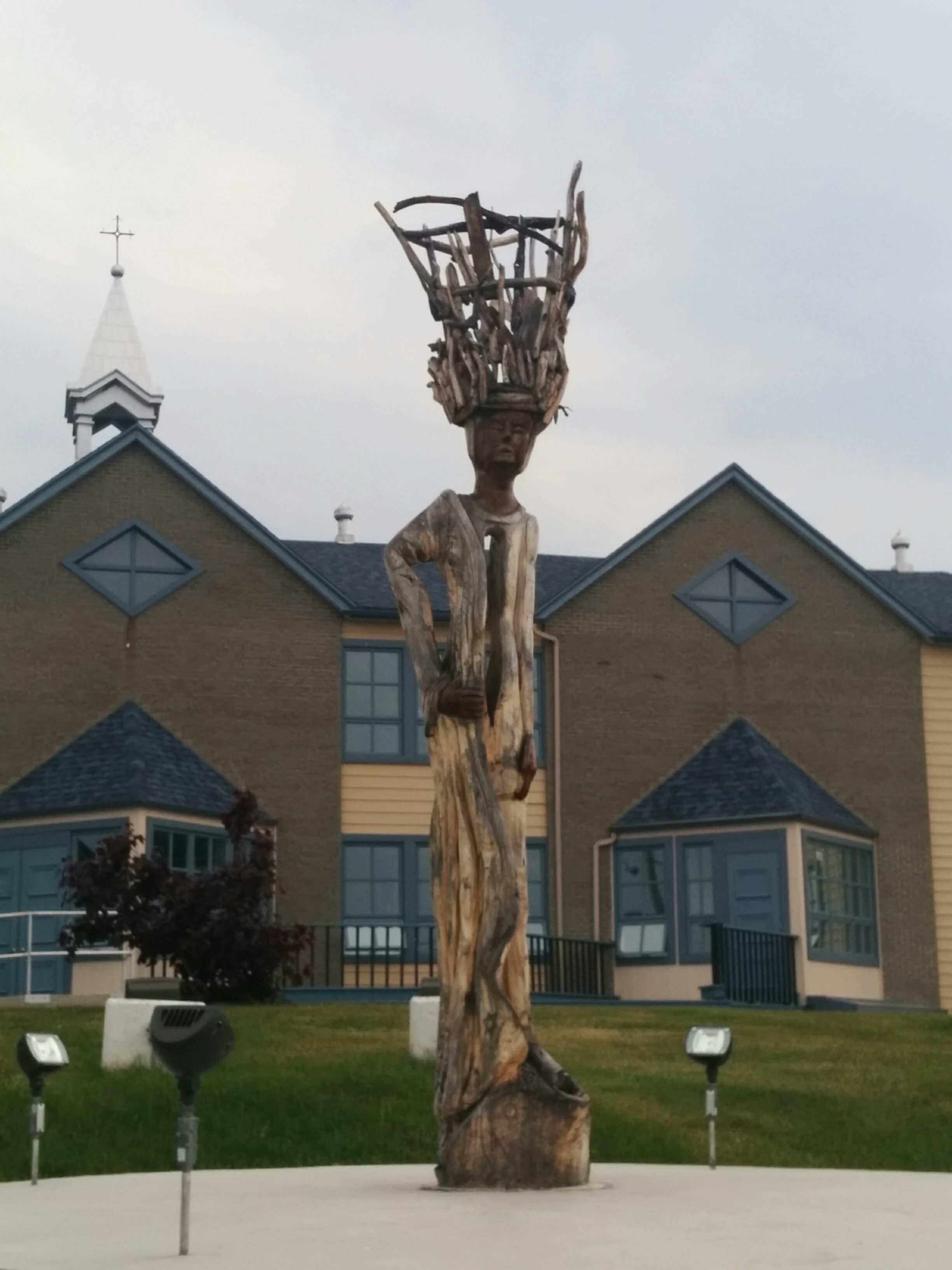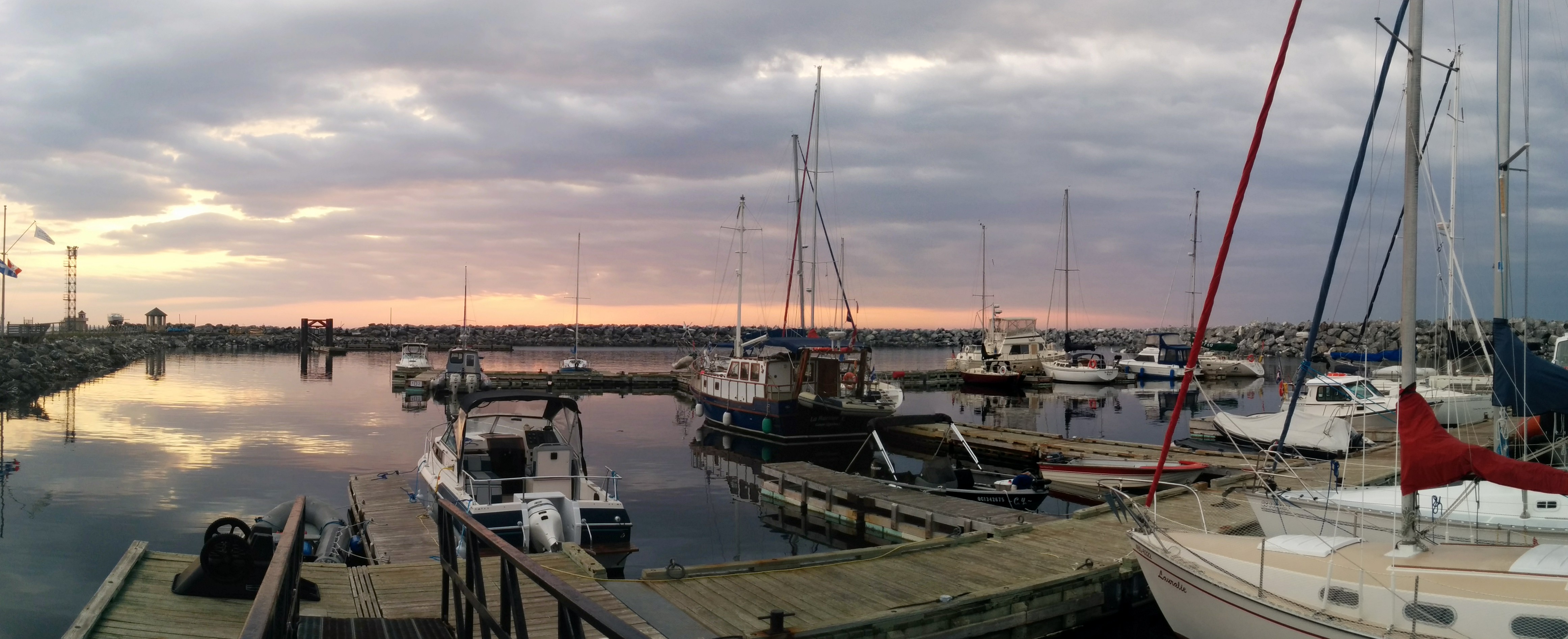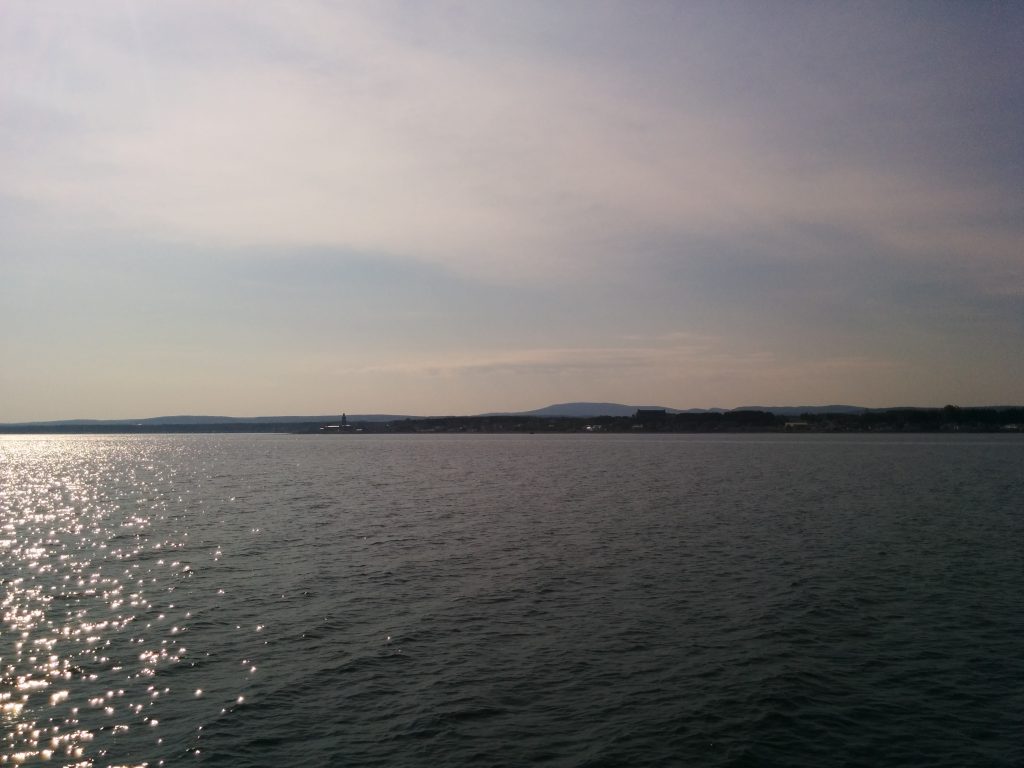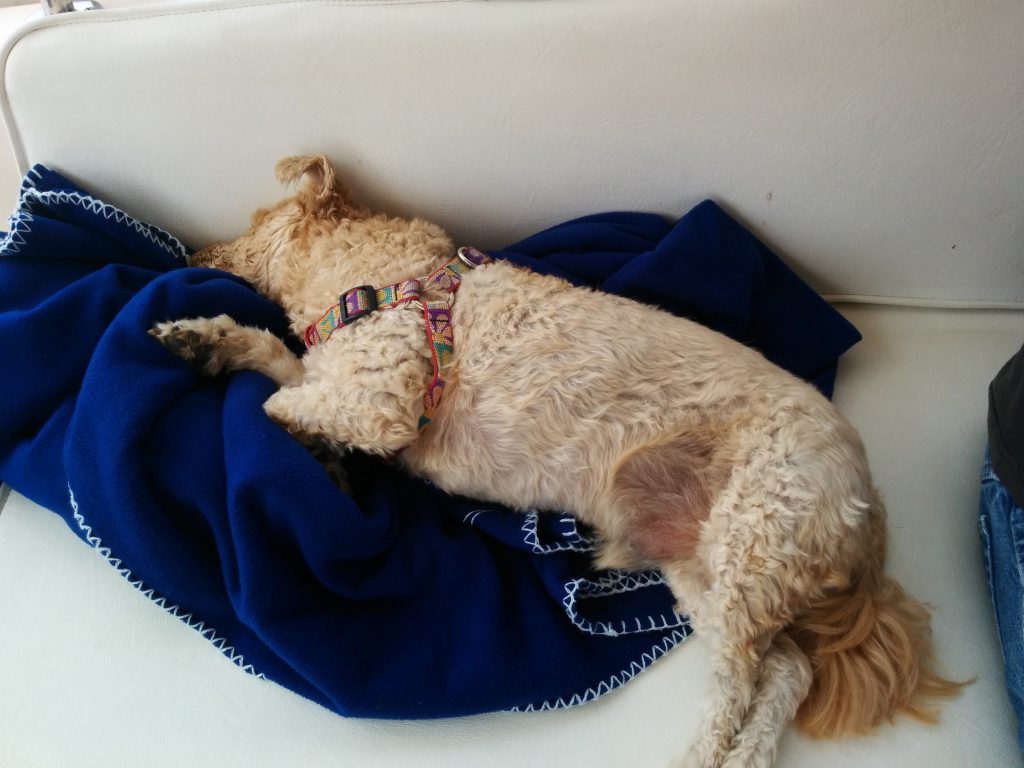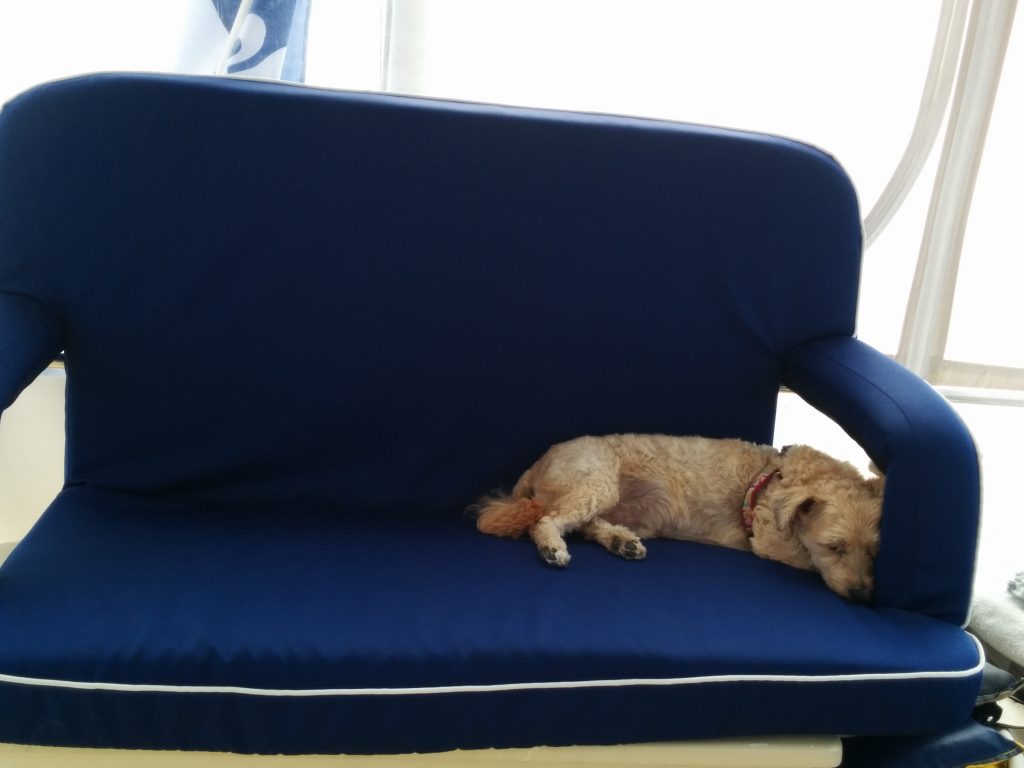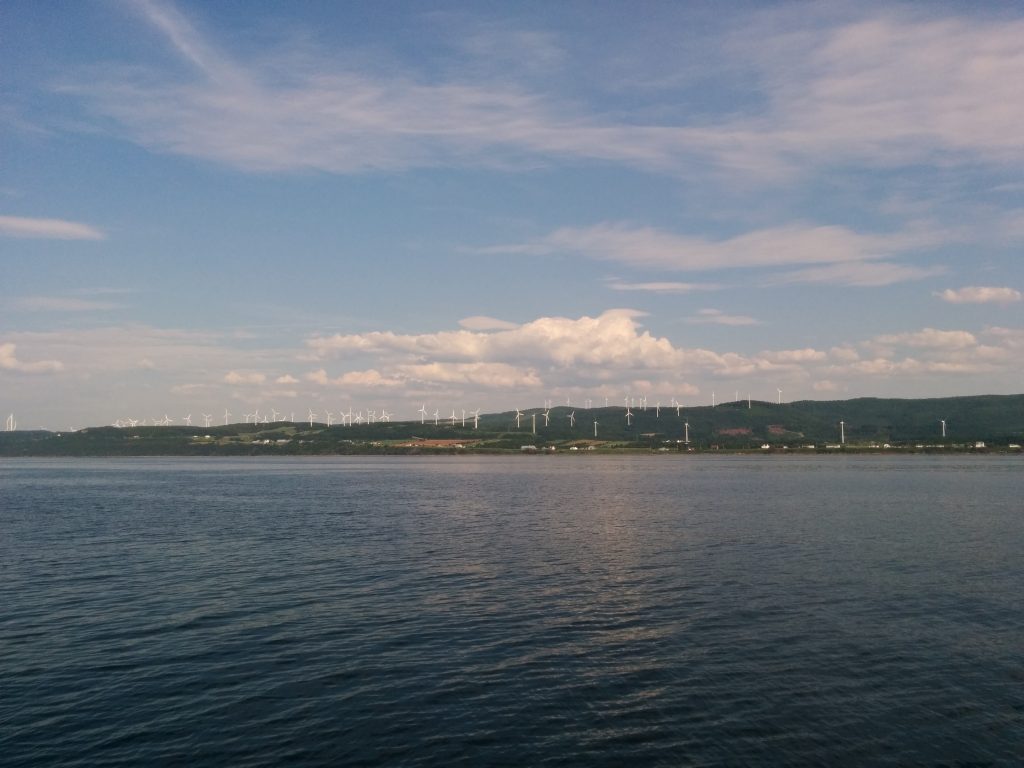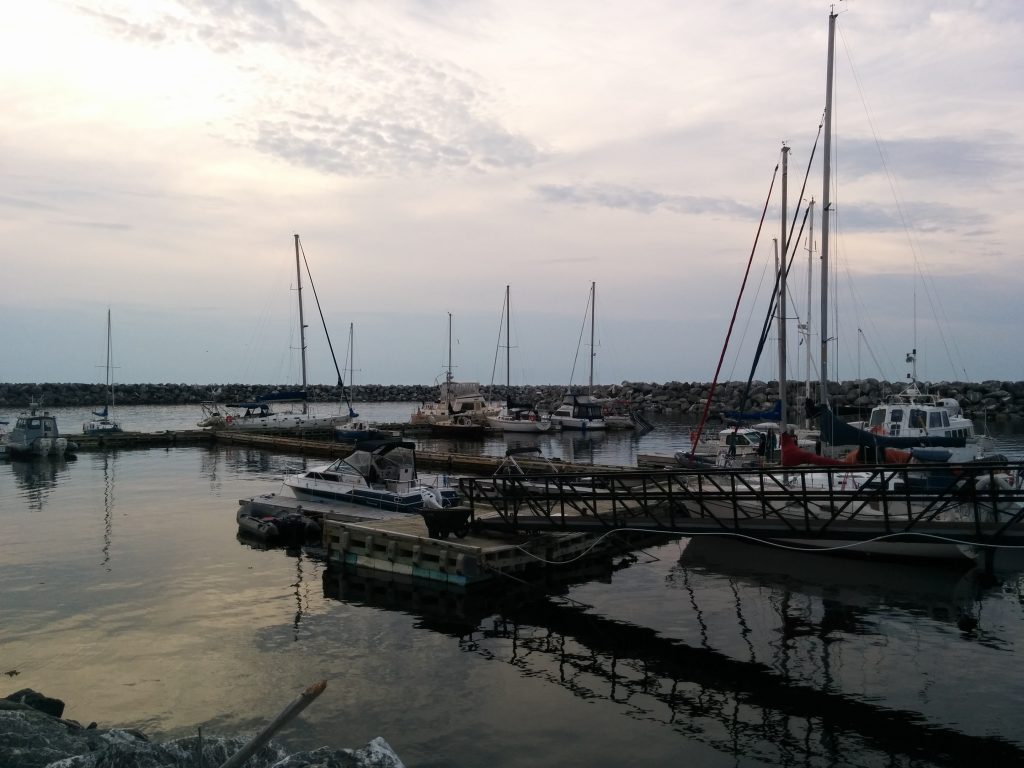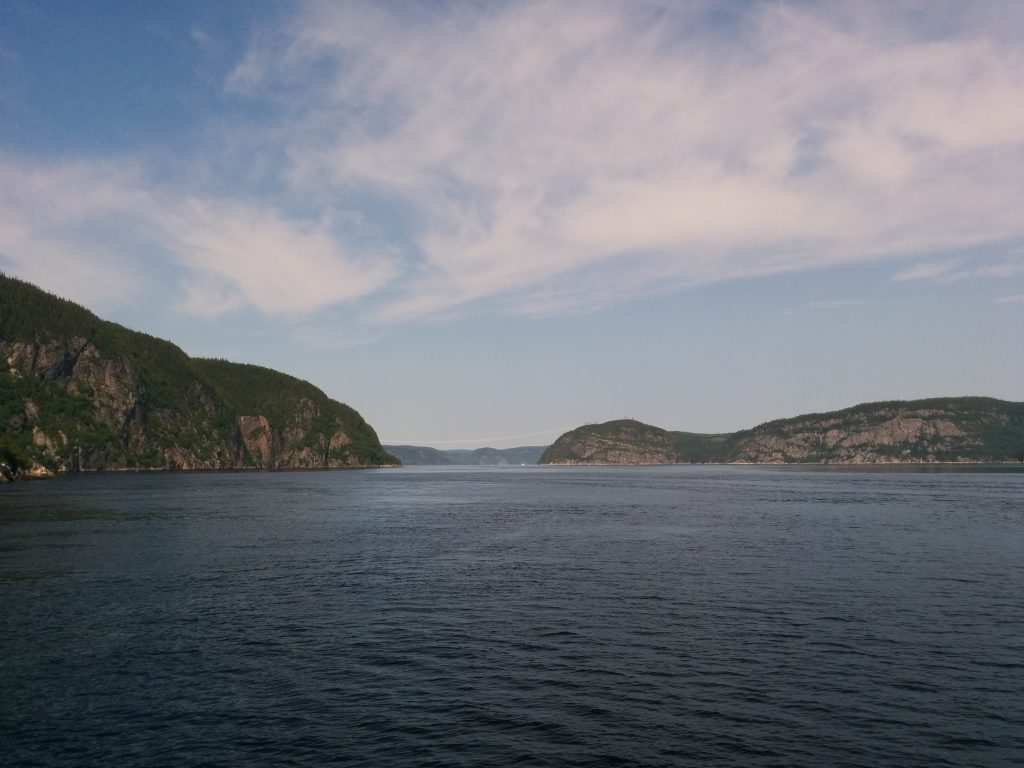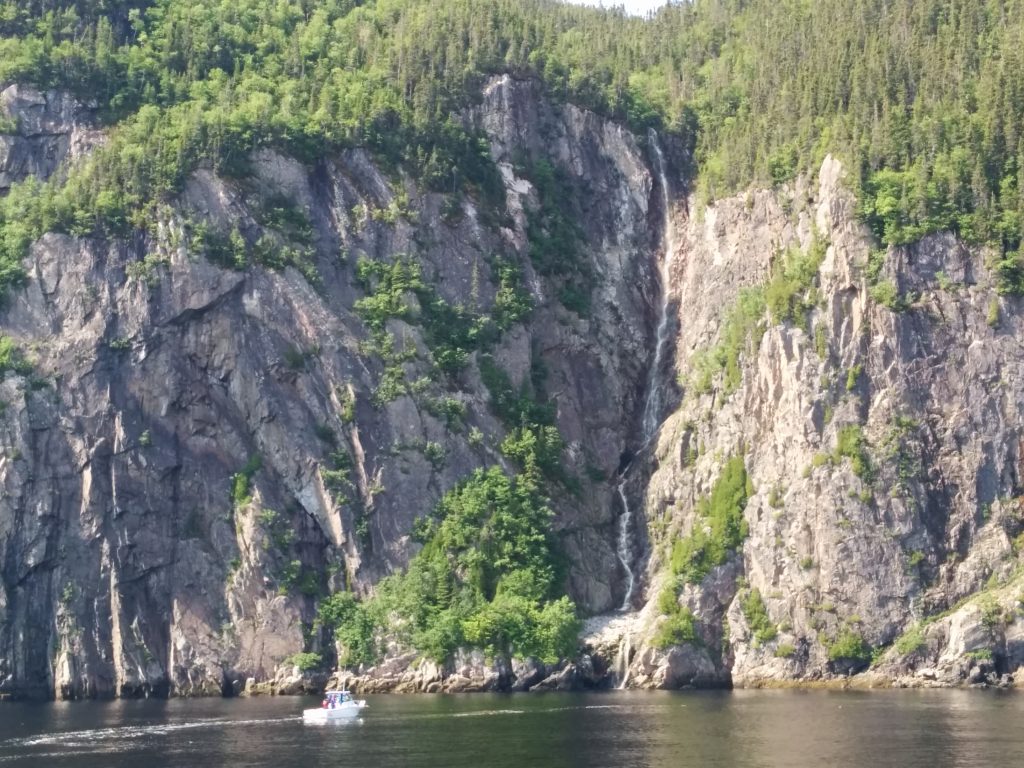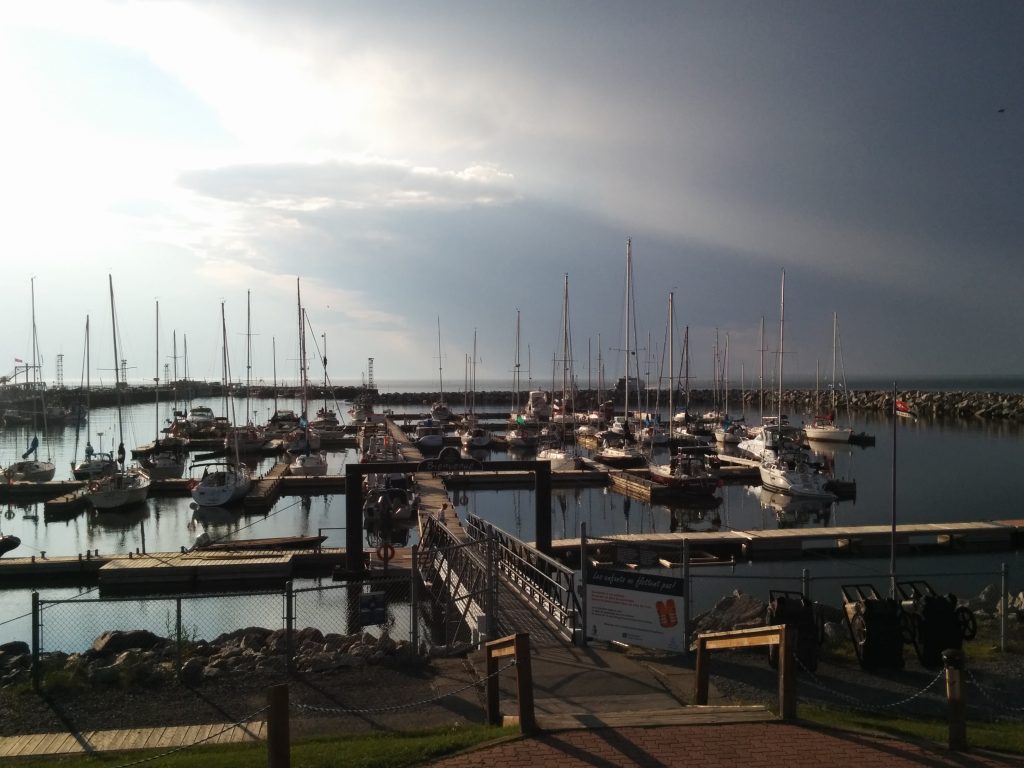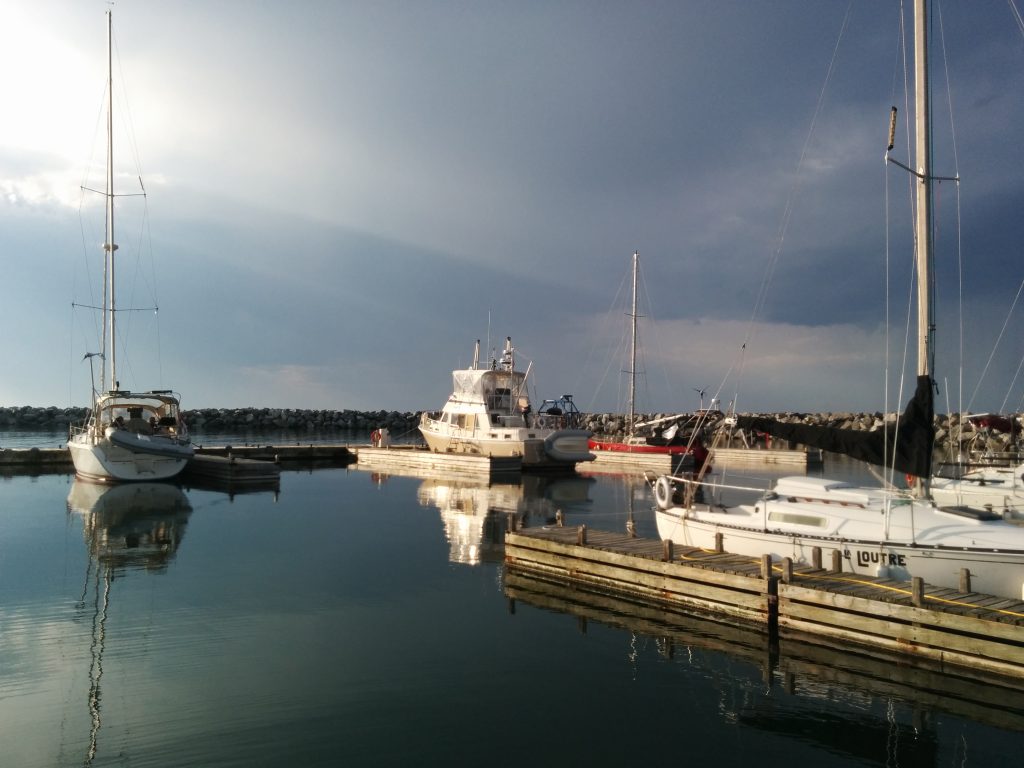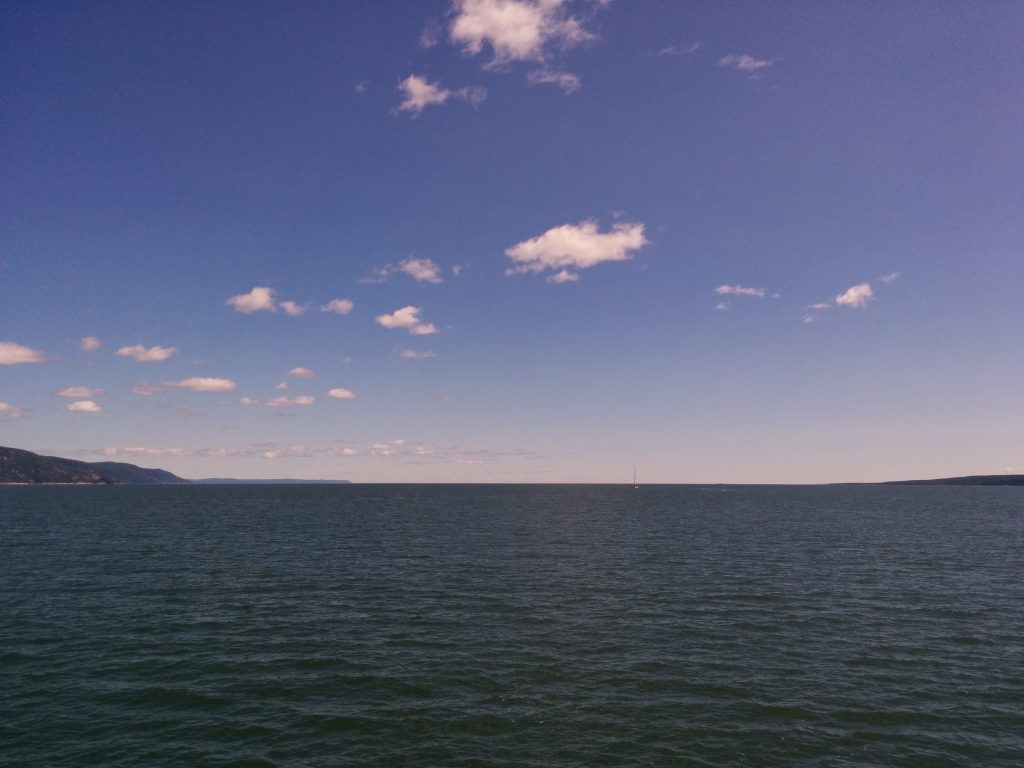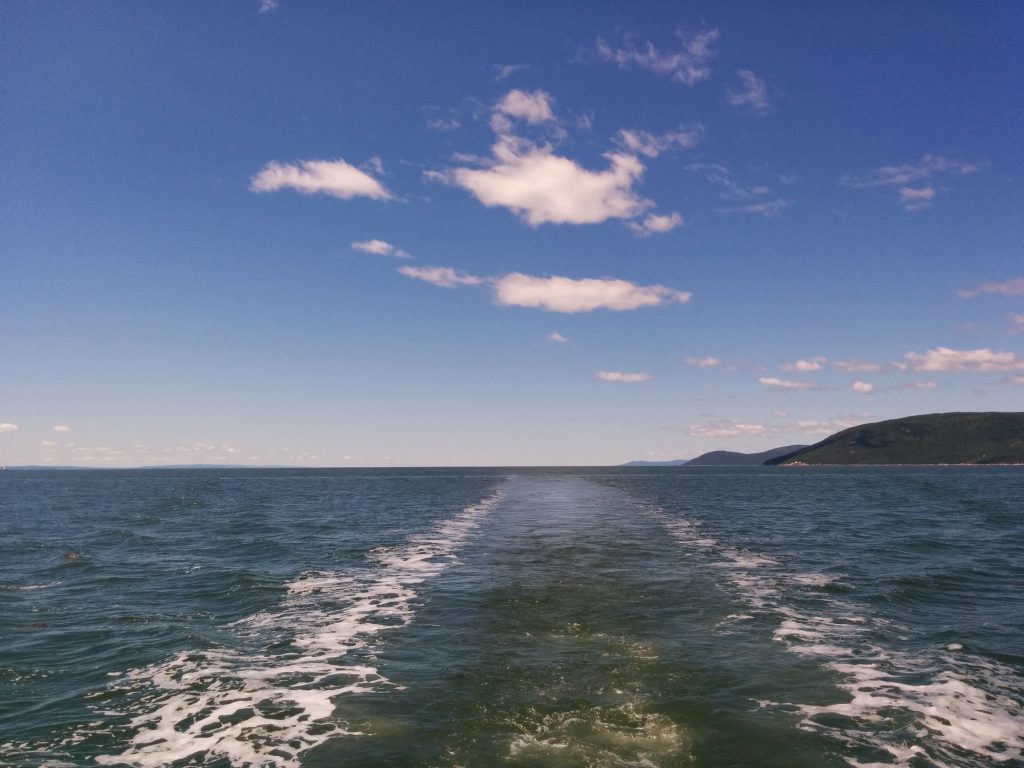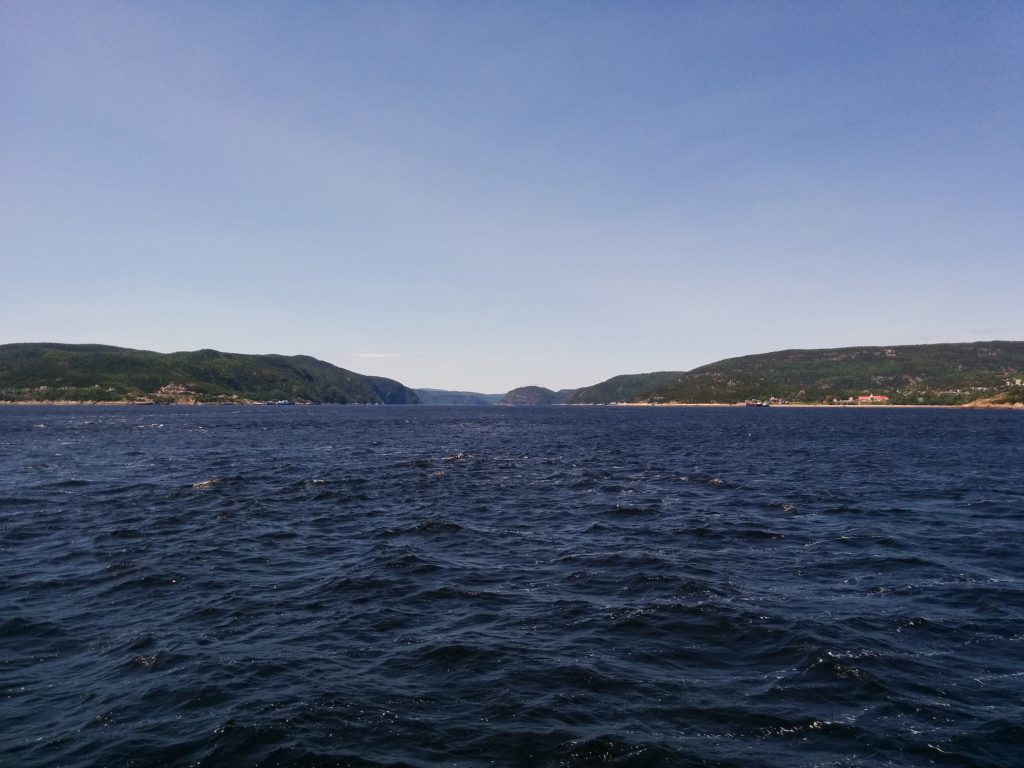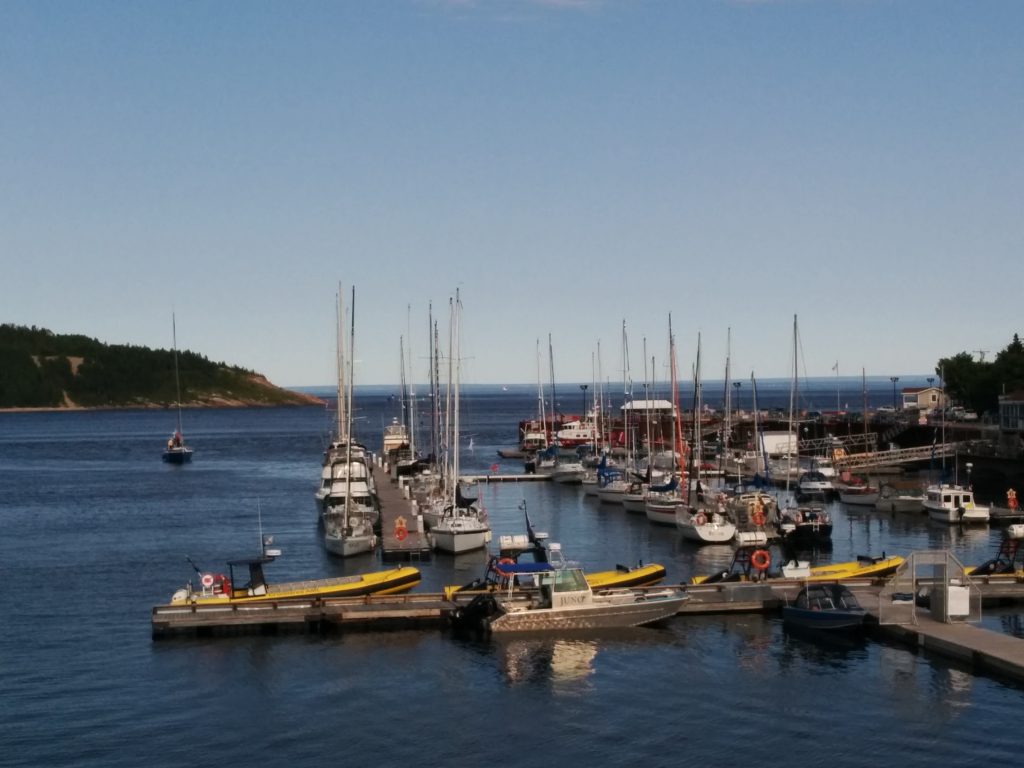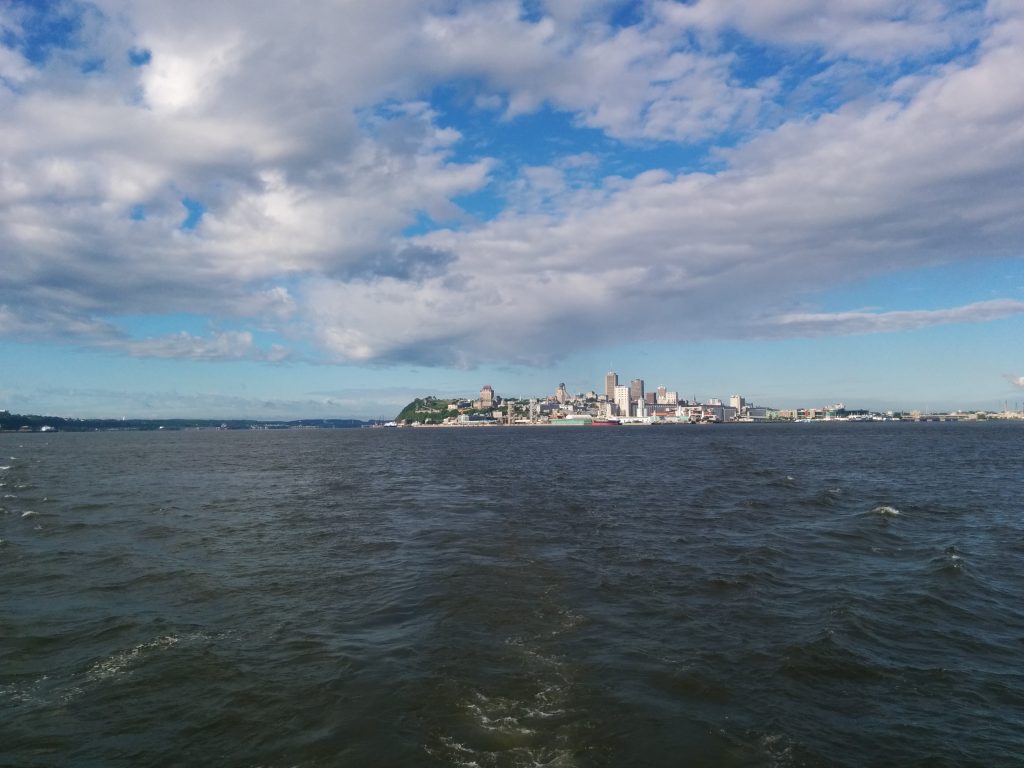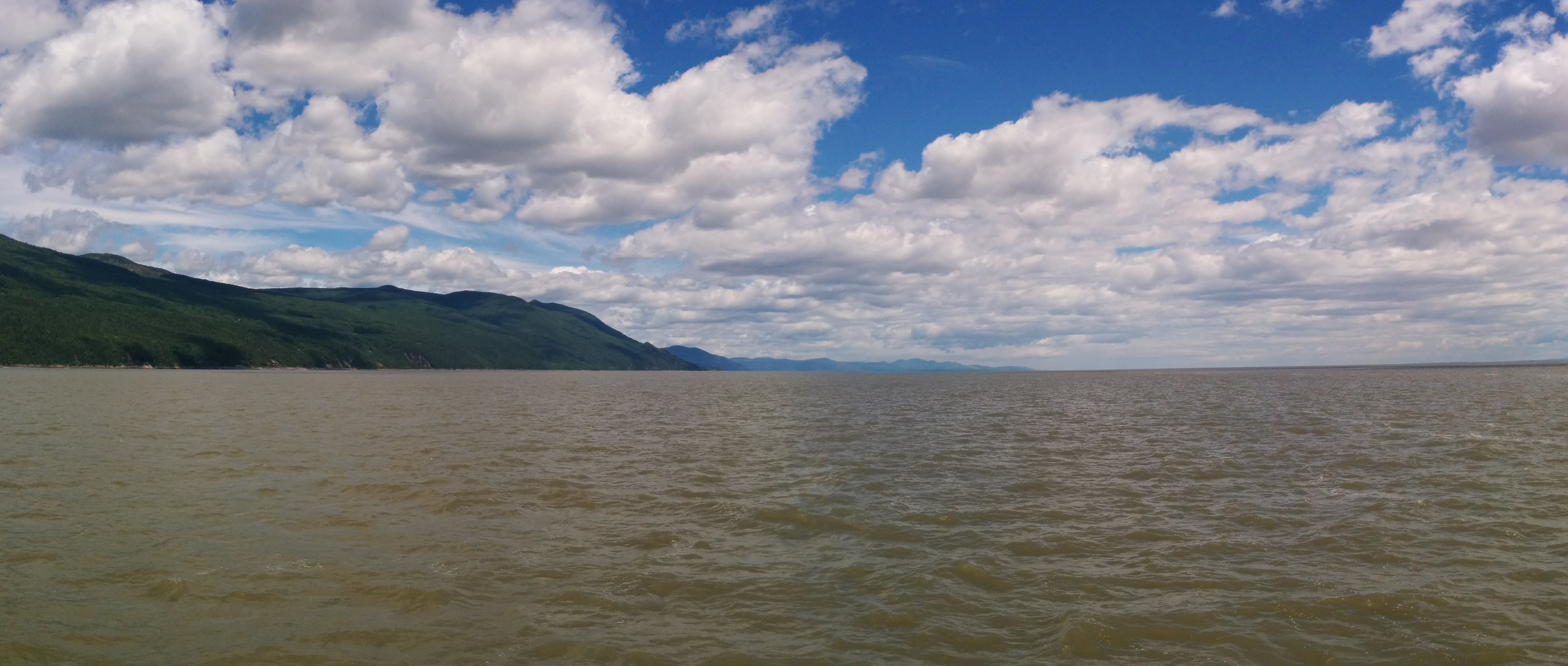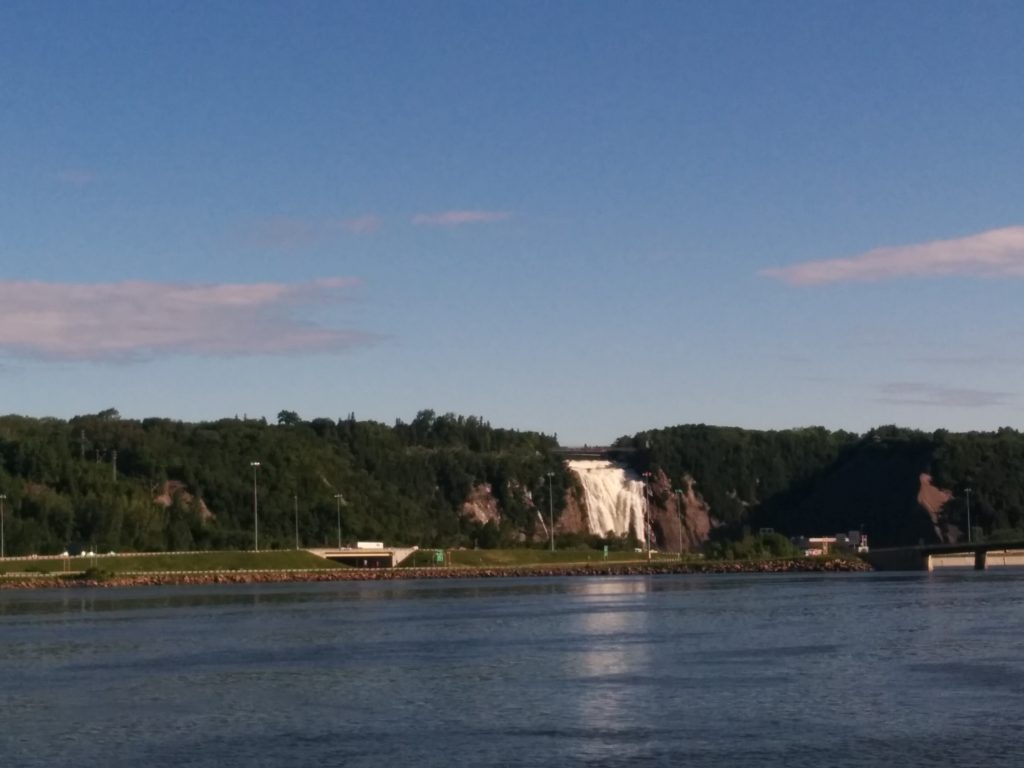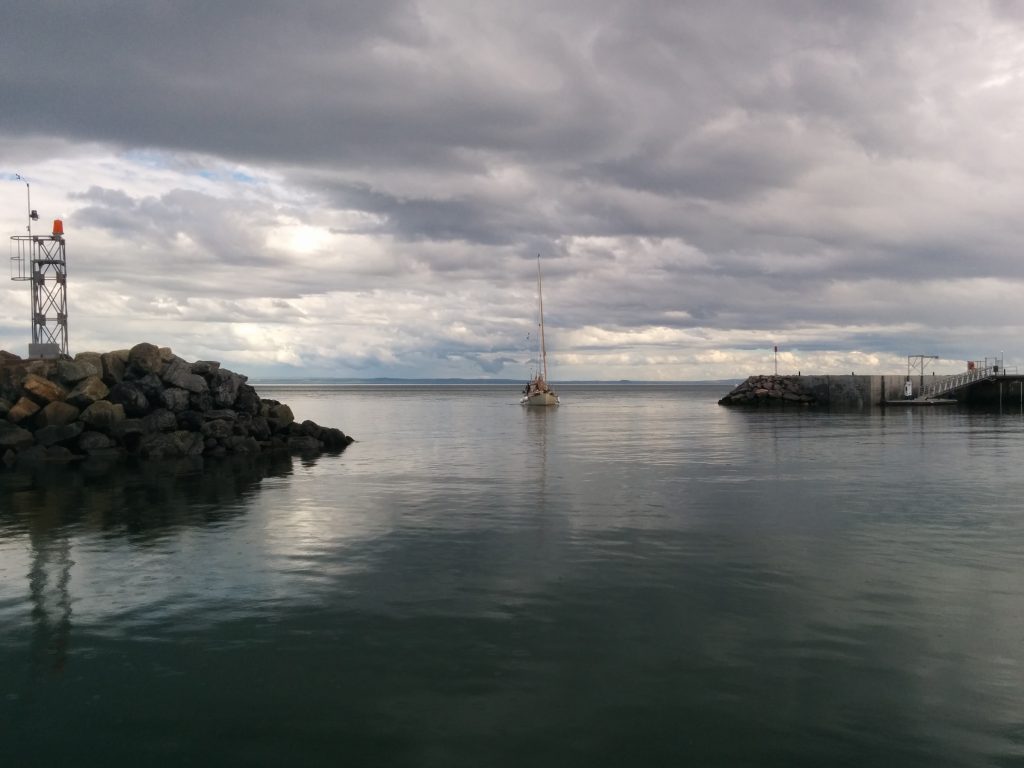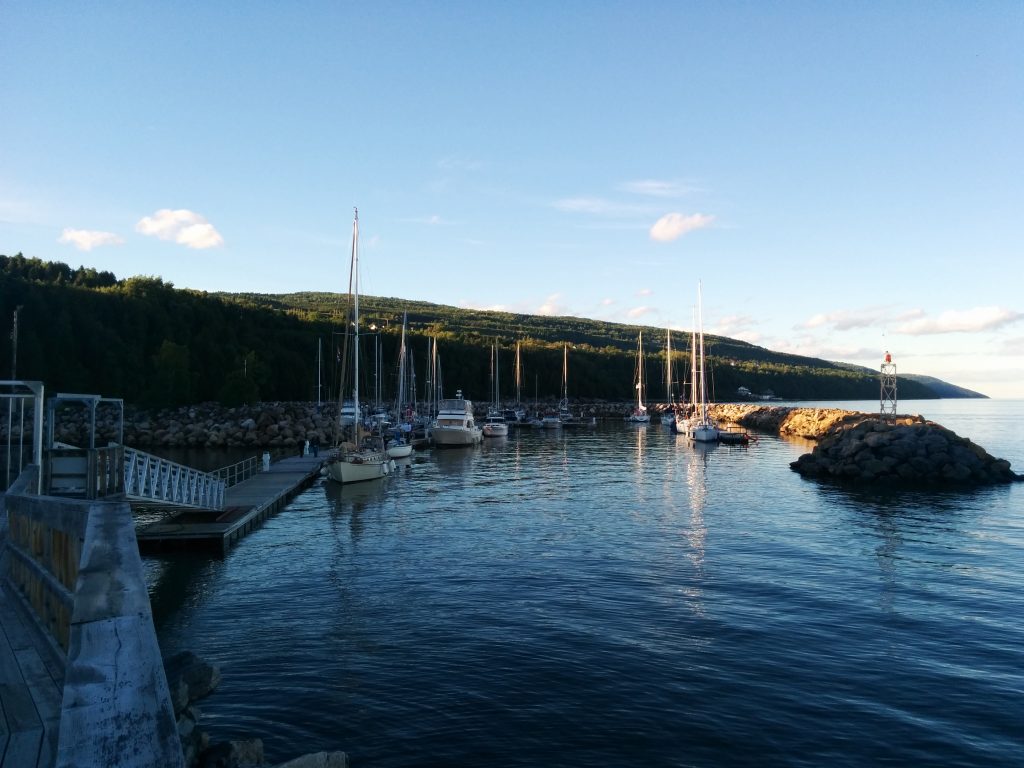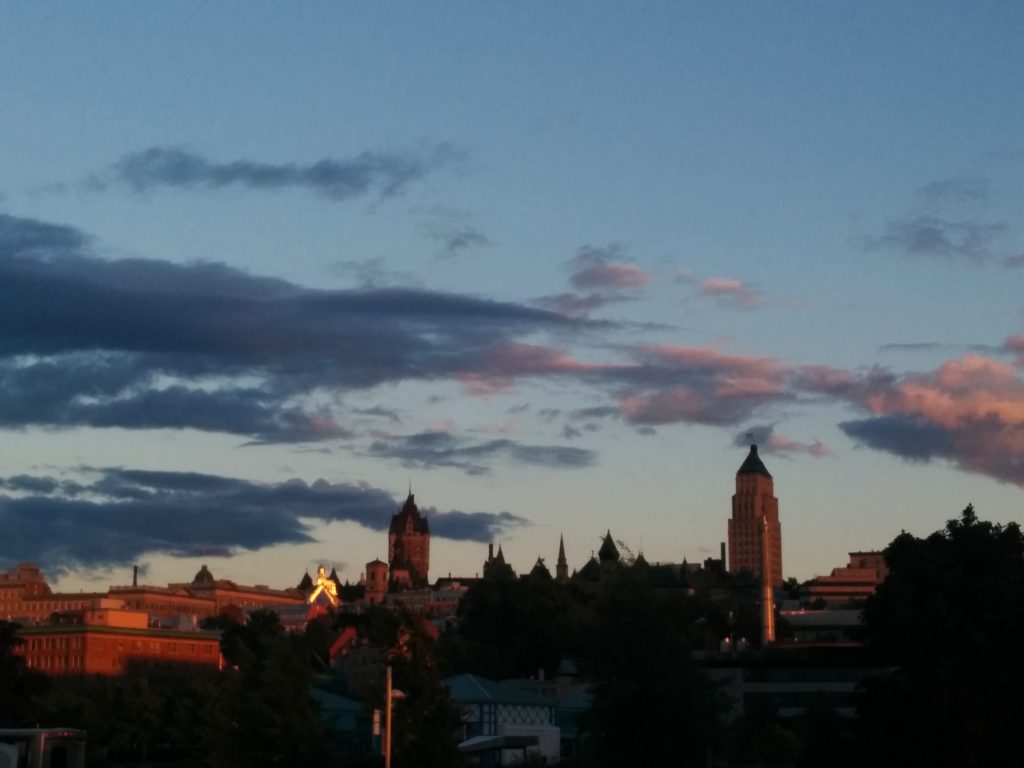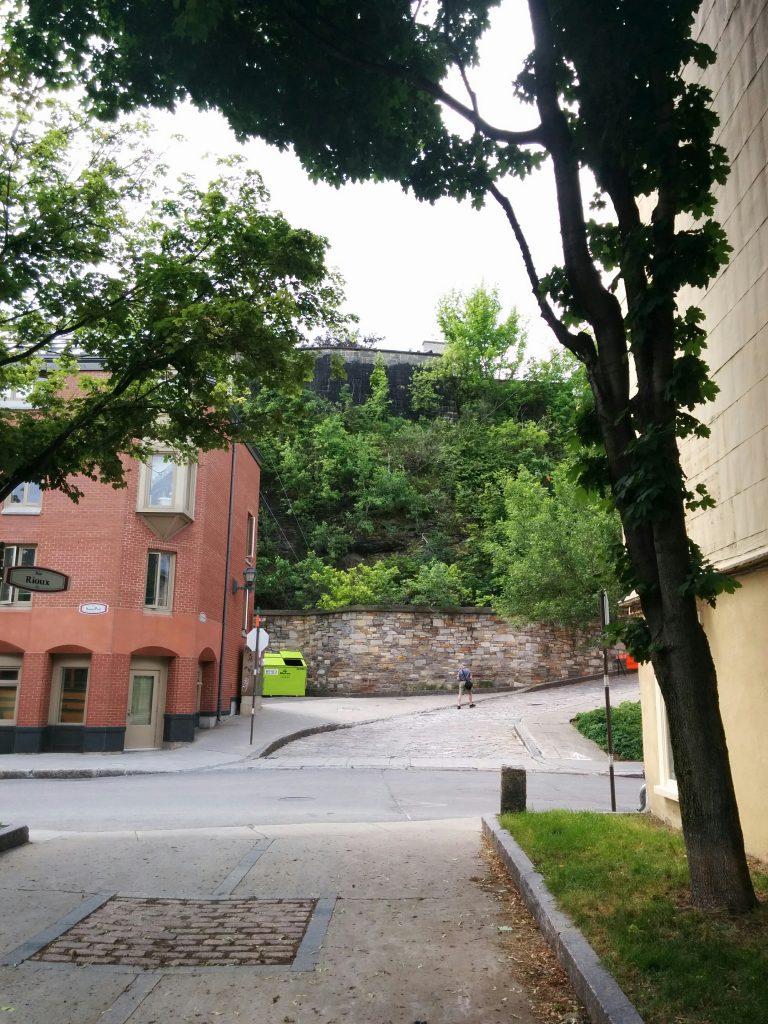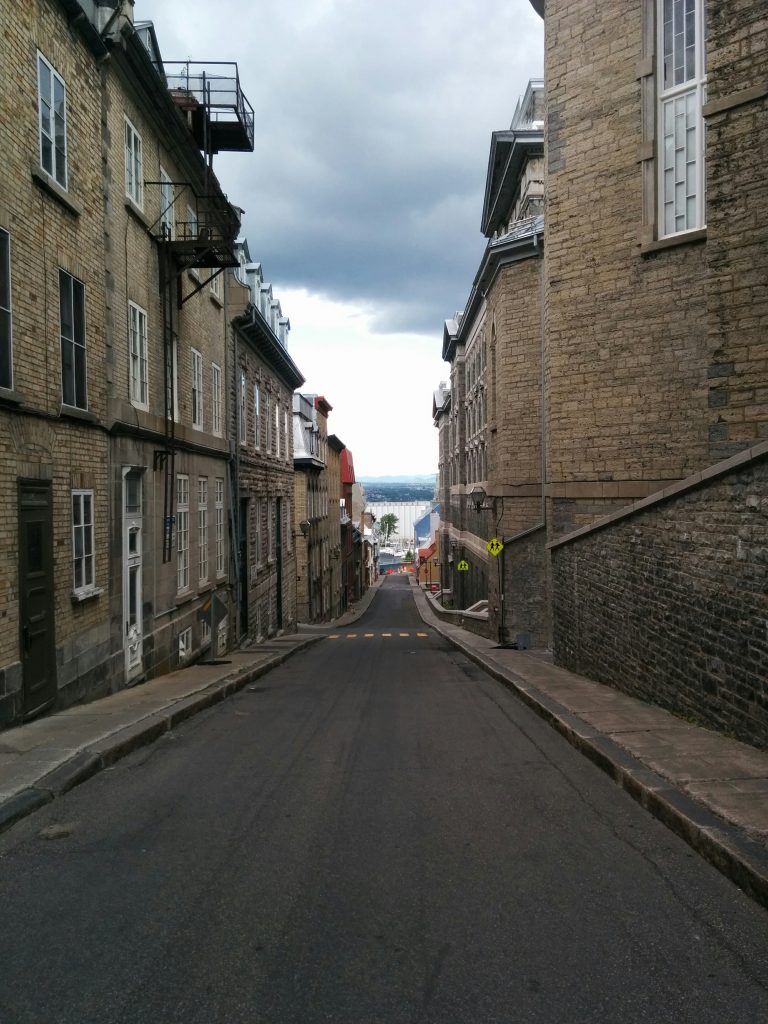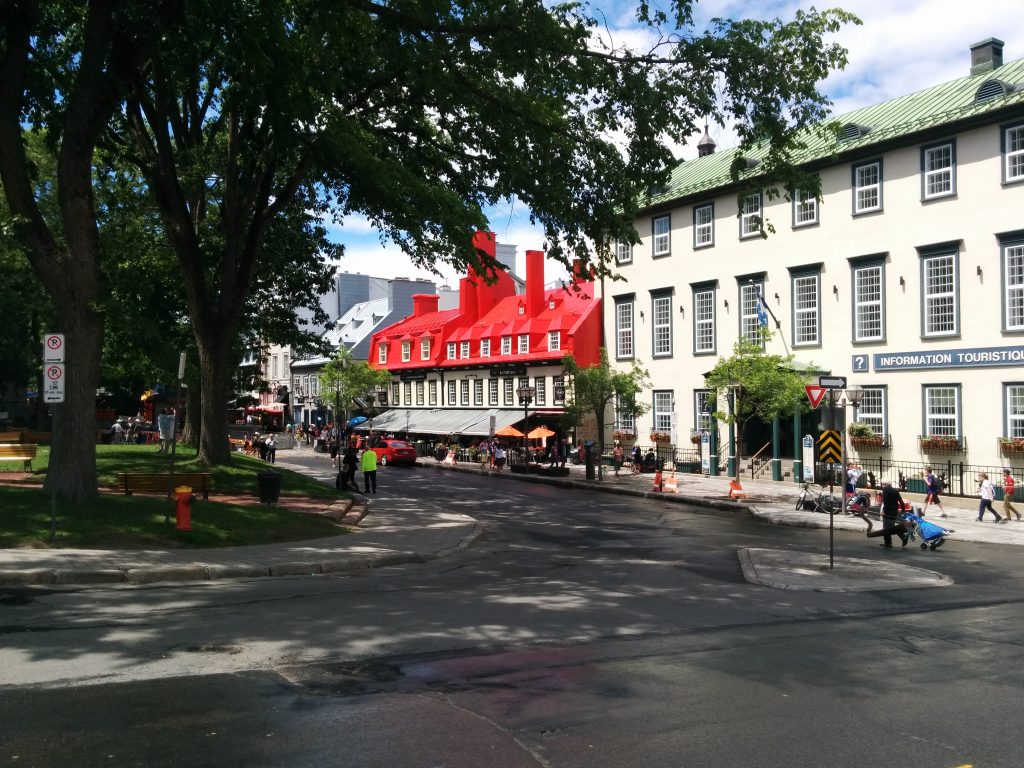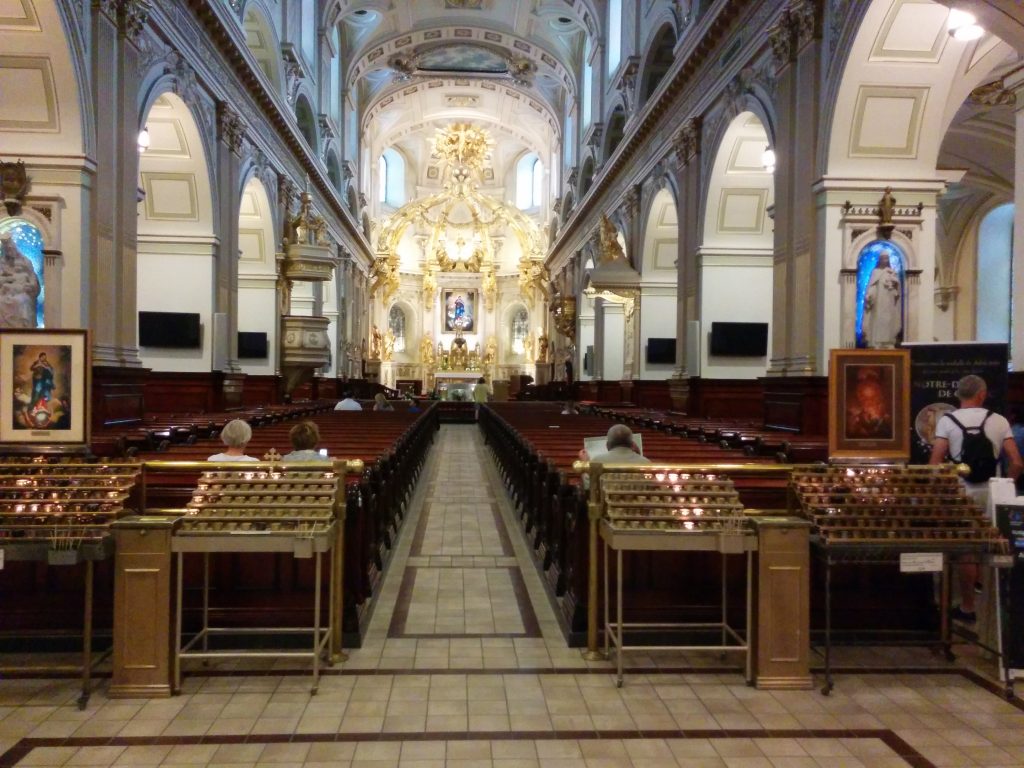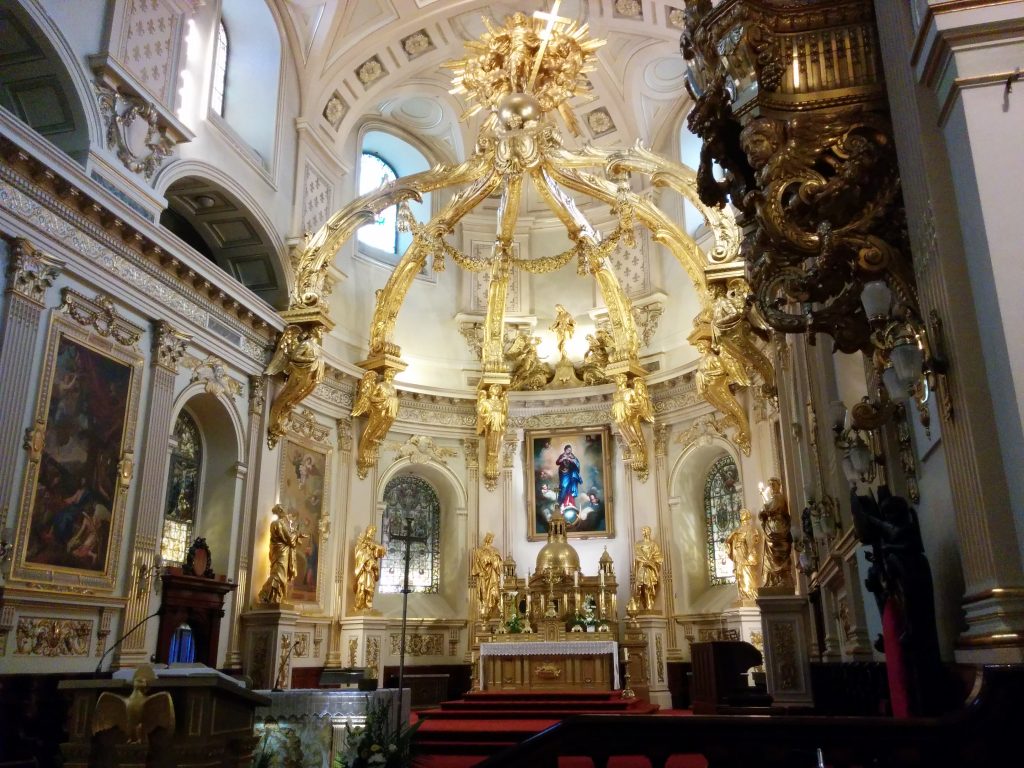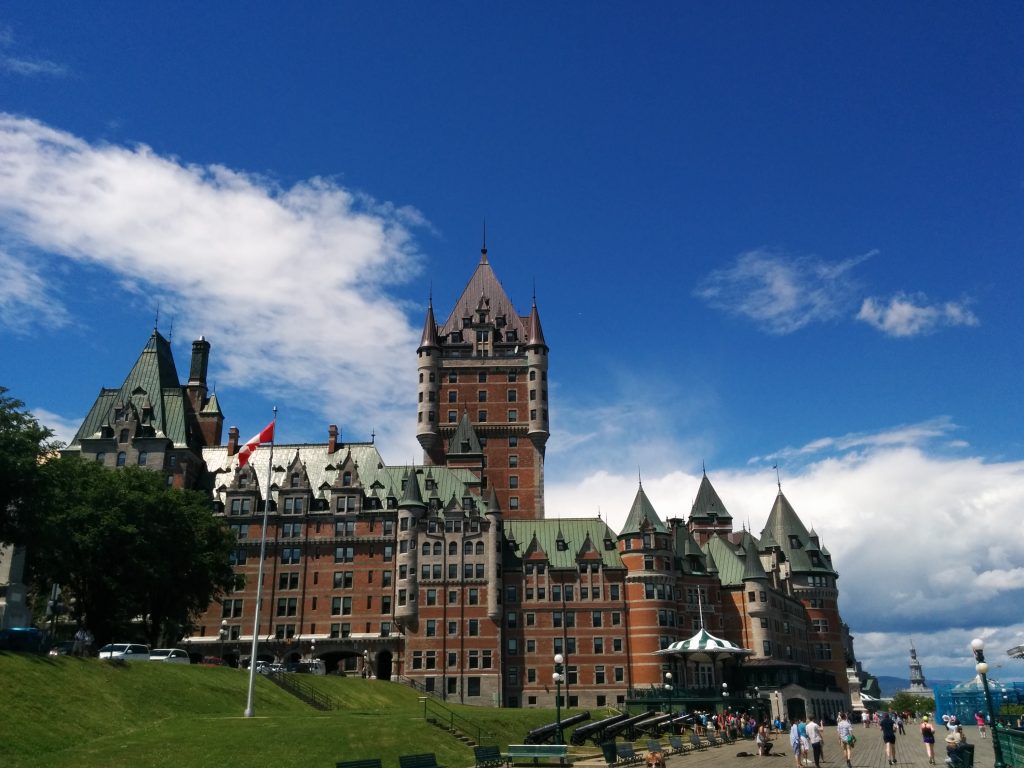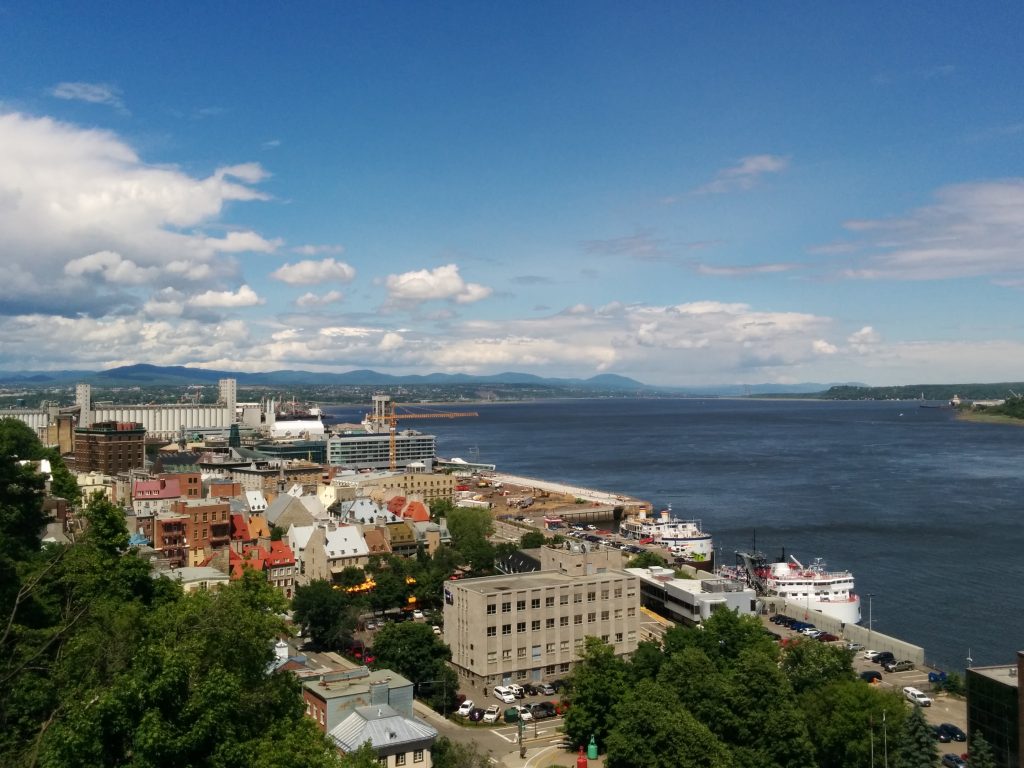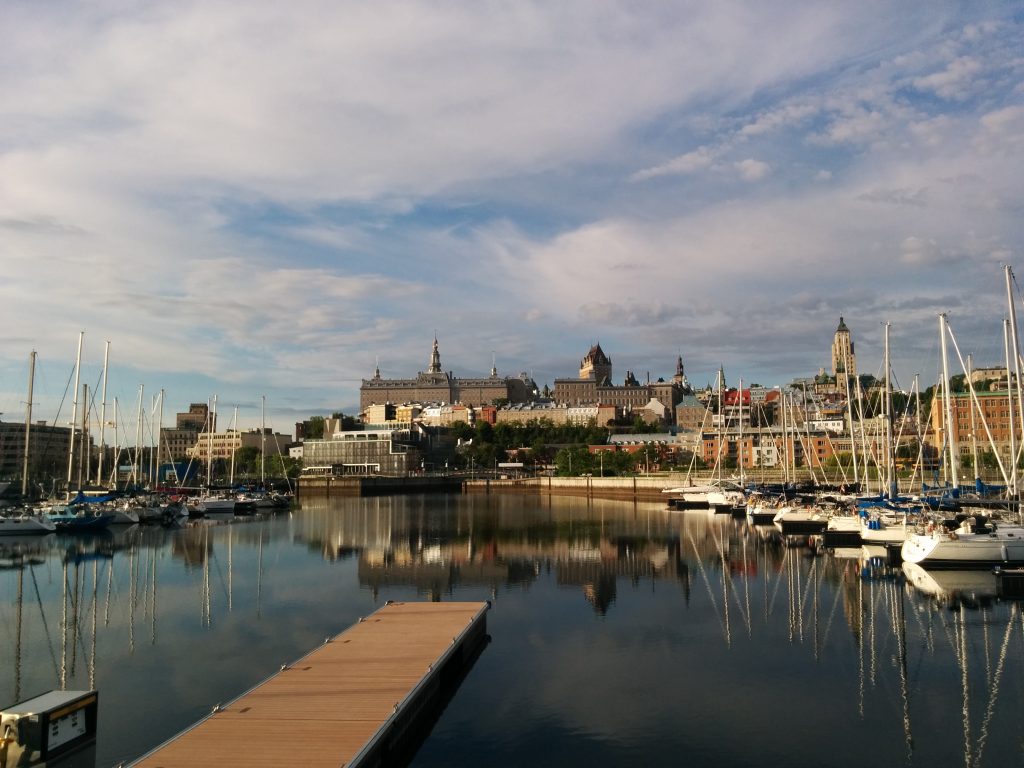Wednesday, 6/30/16, In Port
The forecast today was for West winds, building to 25 knots or more by mid-day. And unfortunately, it was once again correct. Here, a West wind would be preferable to a North or East wind, since it would be a following wind and the shore would offer some protection. But 25+ knots of wind in the open ocean is still not pleasant.
We thought about leaving early, in hopes of making the next port before the winds kicked up, but staying in Rivière-la-Madeleine was the right decision. The boat could certainly have made the transit, and the crew would have arrived intact, but it would not have been an enjoyable ride. As we keep hearing, we’re ahead of schedule, so another day in a sheltered port is better than taking a beating for four to eight hours.
This picture was taken last evening, but the waves were about the same, or a little rougher, this morning, although they were coming from the opposite direction:
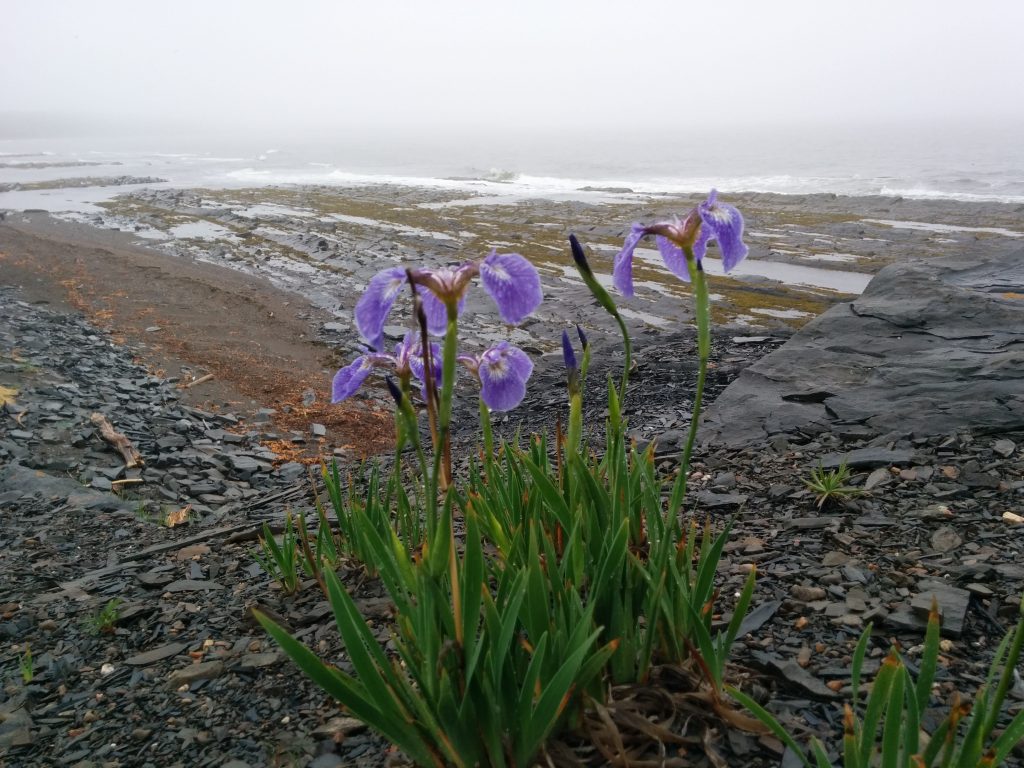
Our French-speaking neighbors managed to score a ride into Grande Vallée, a town about 10 or 15 km from here that has a small marchè (market) and SAQ (Quebec liquor store). And, like all small towns in this area, a pair of enormous churches (only one is visible from this angle.)
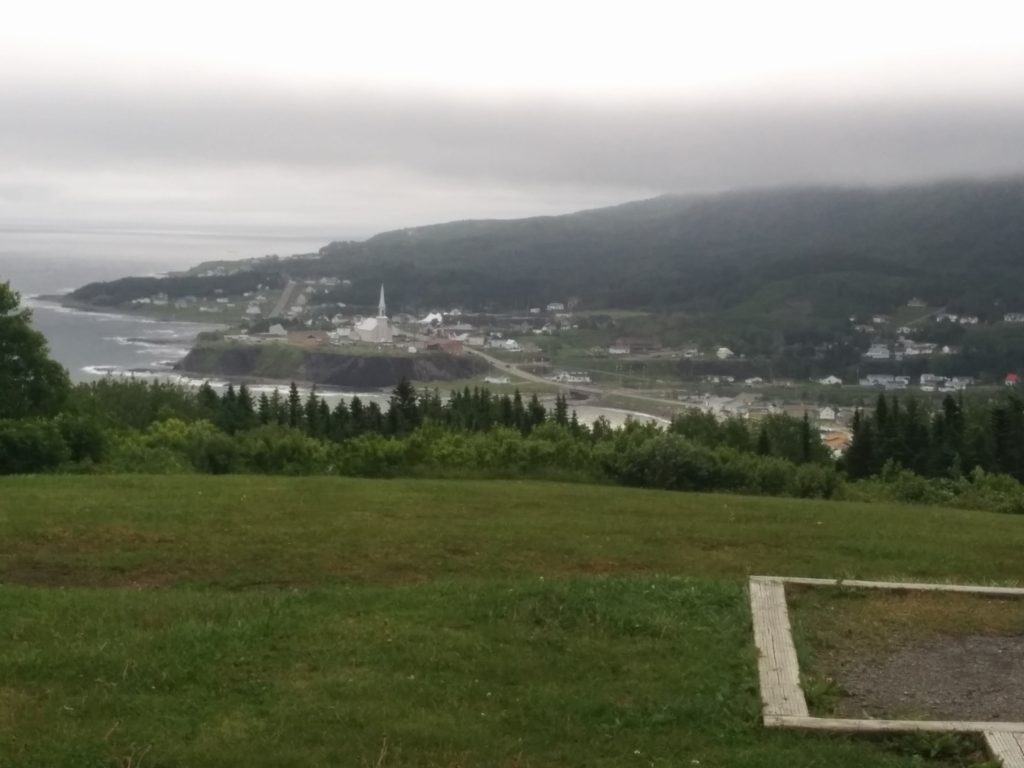
We’ve had some great questions posted in the comments, keep them coming and I’ll try to answer when we have internet access.
I’ve covered some of the navigation gear we carry, and mentioned our electric appliances and how we power them.
Today we’re glad to have heat on board, too. It was in the low 50’s (F) last night, and only 61 on deck in the sun now, with the wind howling.
When in port, the simplest thing to use are our 2 zones of reverse-cycle air conditioning, which are similar to what some companies are marketing as “geothermal” heating units for homes. Technically, however, those units are ground-source heat pumps. Real geothermal is something a little different.
Ground-source heat pumps are like air conditioners, only backwards. They pump heat from the (relatively) warmer ground by running water pipes through it. Here we don’t need the pipes, we run the ocean water directly through the air conditioner, in “reverse cycle” mode to pump heat into the boat, instead of out.
Each zone takes about 8 Amps of power to run, and we’re finding that here in these out-ports, power isn’t very reliable. If we try to pull just 10 A, the voltage drops to below 100 V. So we can run one heating unit, but only if we run nothing else.
Living on a boat this size means being much more in-tune with your energy budget. Our power panel allows us to manage the power sources; two 12VDC (house battery bank and backup bank) and three 120VAC (two shore power inlets and the generator). We can distribute the power among the various 12VDC and 120VAC loads. There are also some meters on the panel to show basic information about the amount of power we’re using.
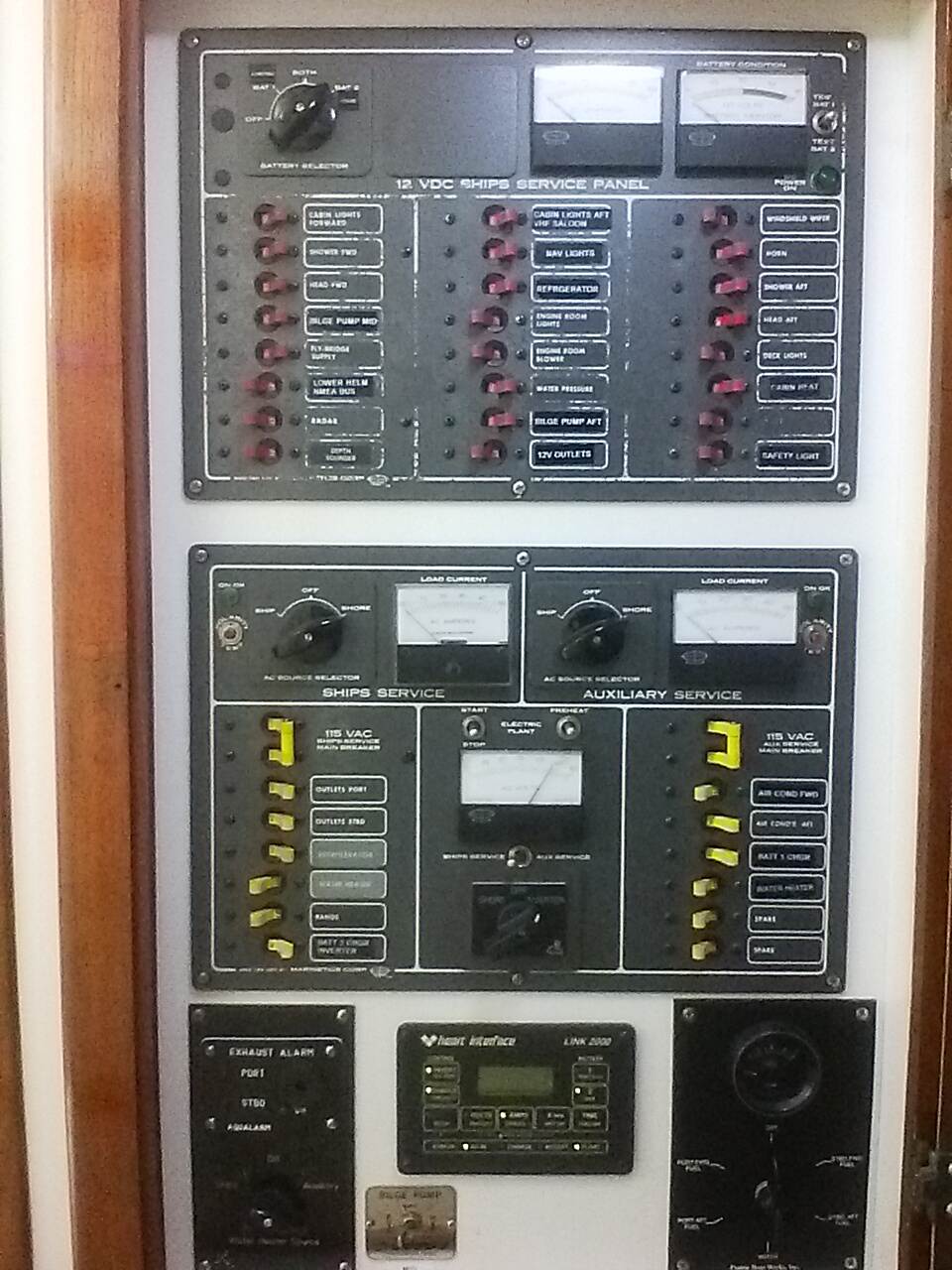
The second option for heat is a diesel heater, commonly used in over-the-road trucks in Europe and Russia, where they’re sometimes called “parking heaters”. Ours is a Russian brand called “Planar.” It’s basically a very small forced-hot-air furnace that runs on diesel fuel. Which is essentially the same thing as home heating oil.
This works great, and doesn’t require shore or generator power. I try to avoid using it while sleeping, since you can never be 100% certain that no exhaust fumes can leak into the cabin, but so far it’s performed well the few times we’ve needed it.
